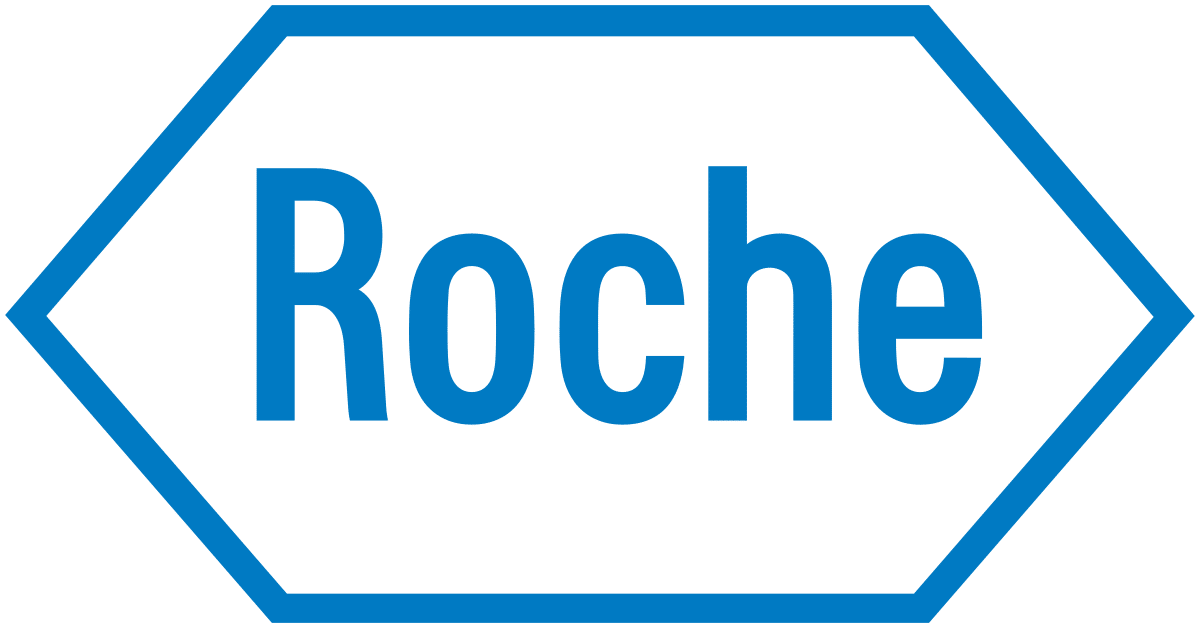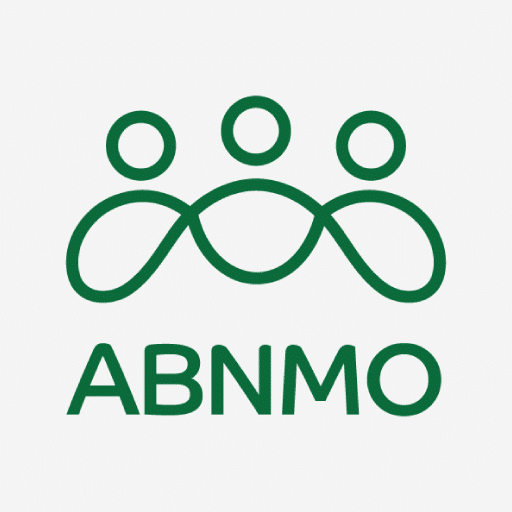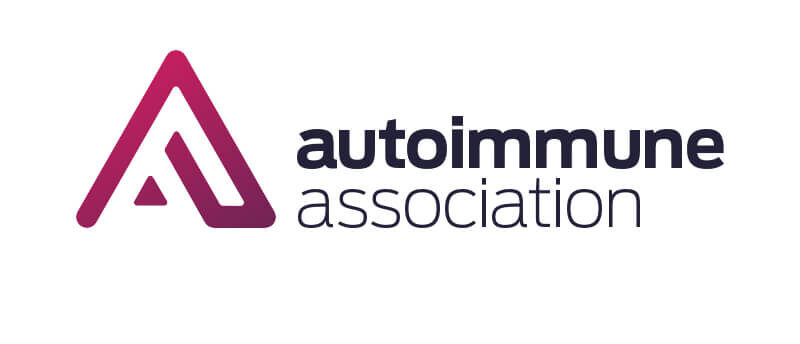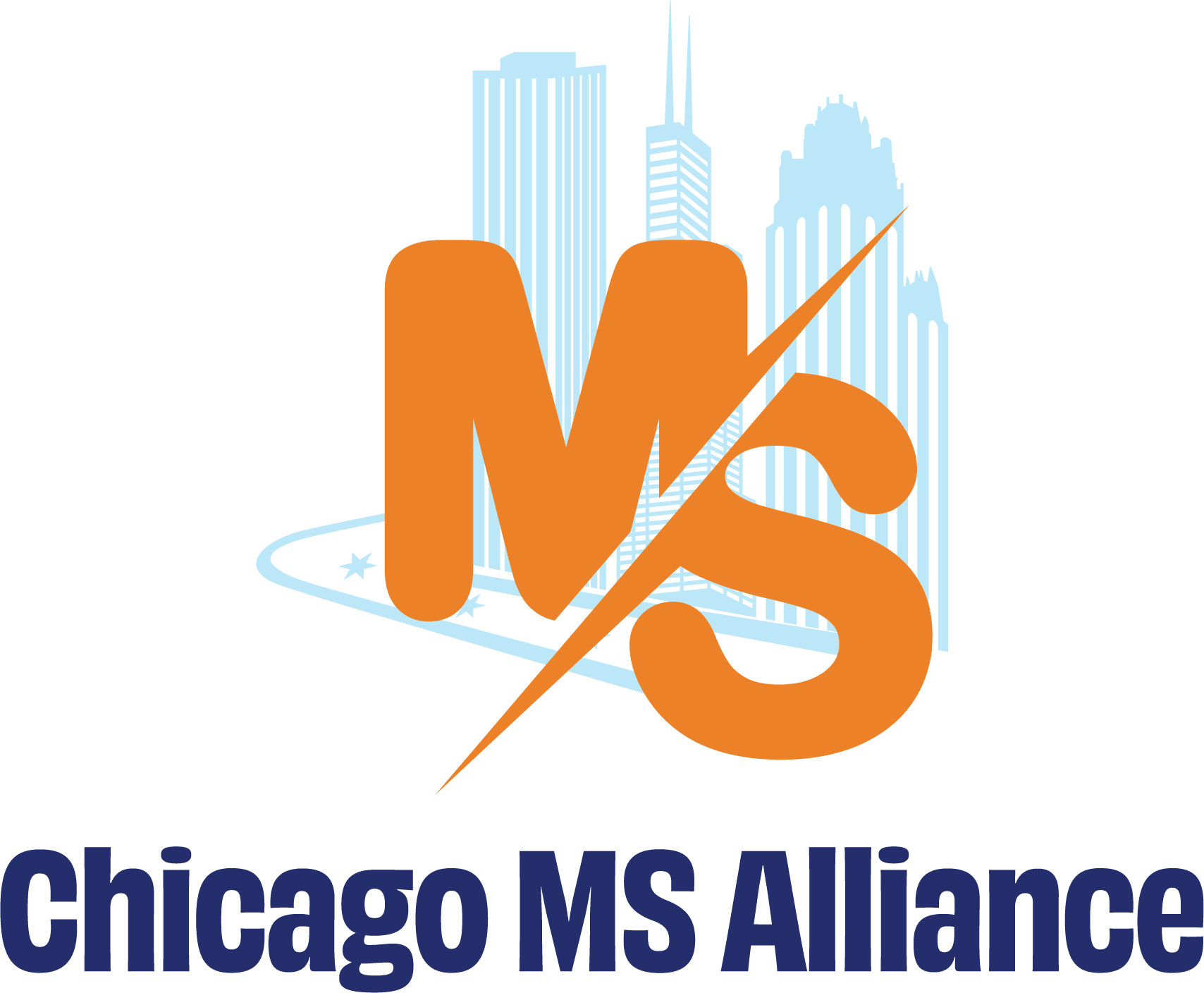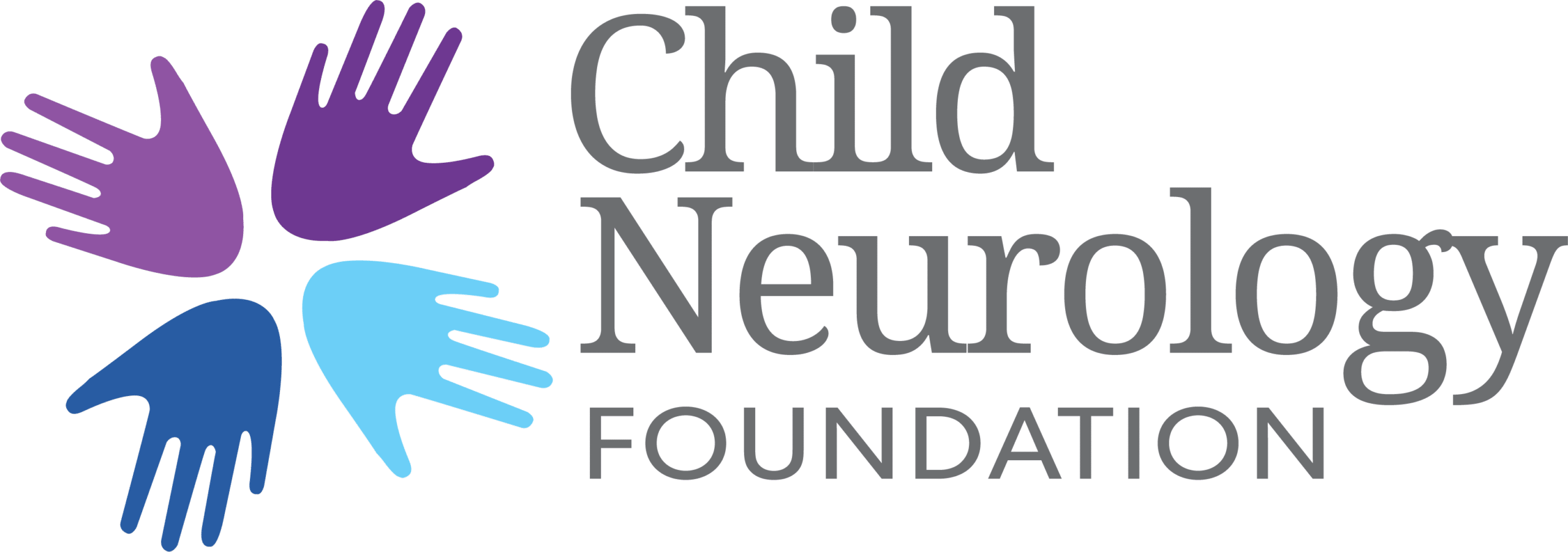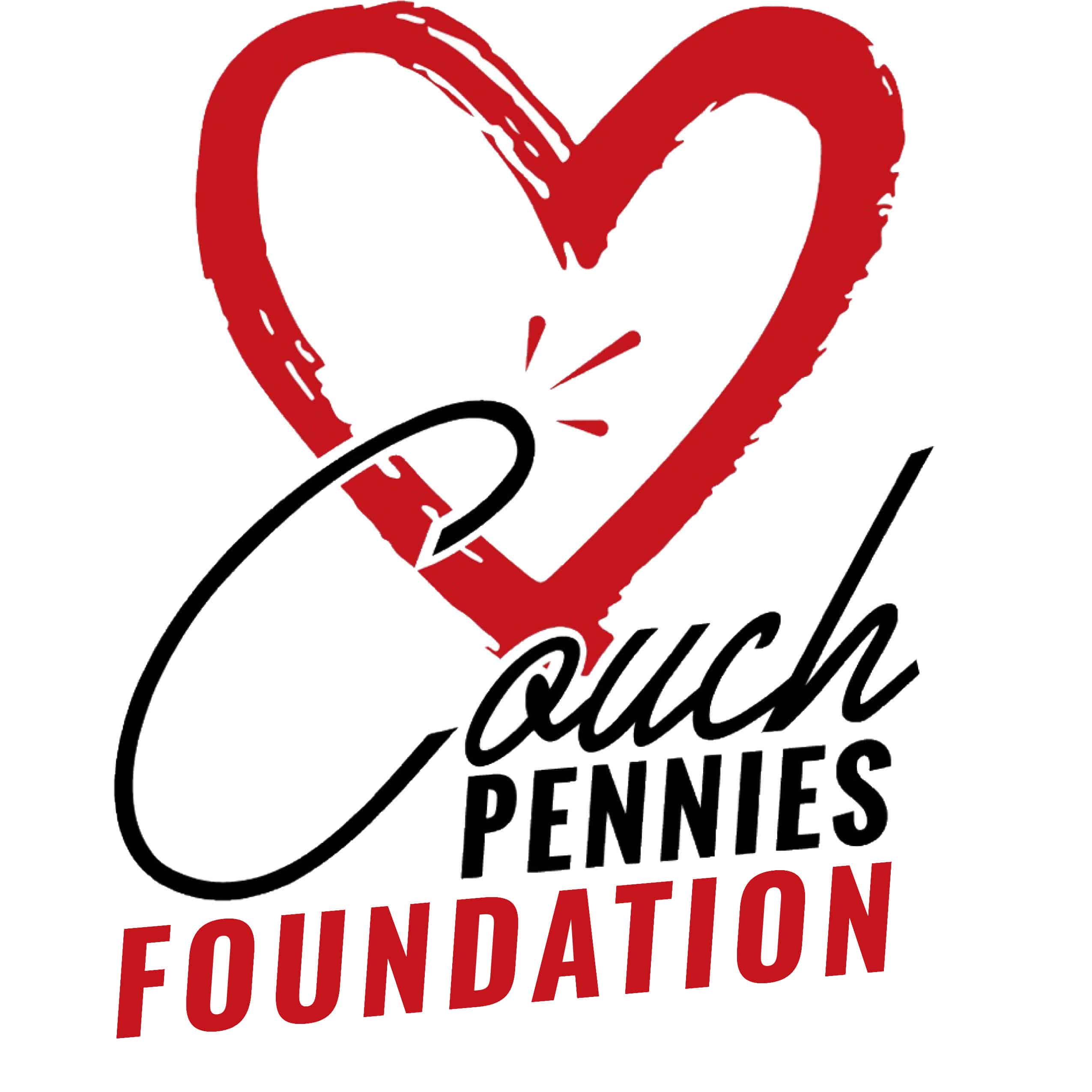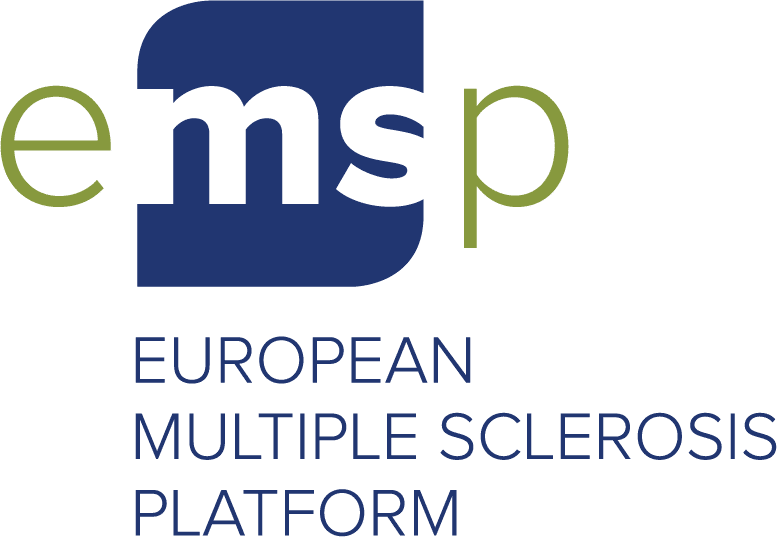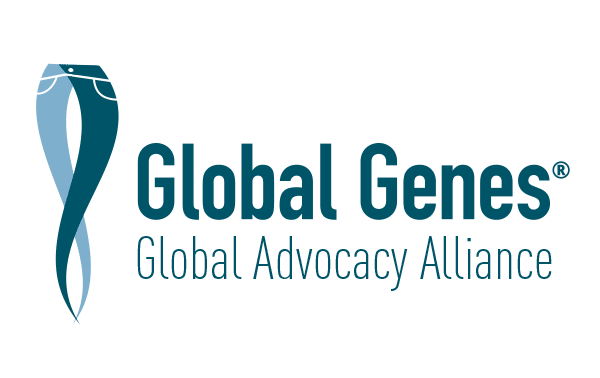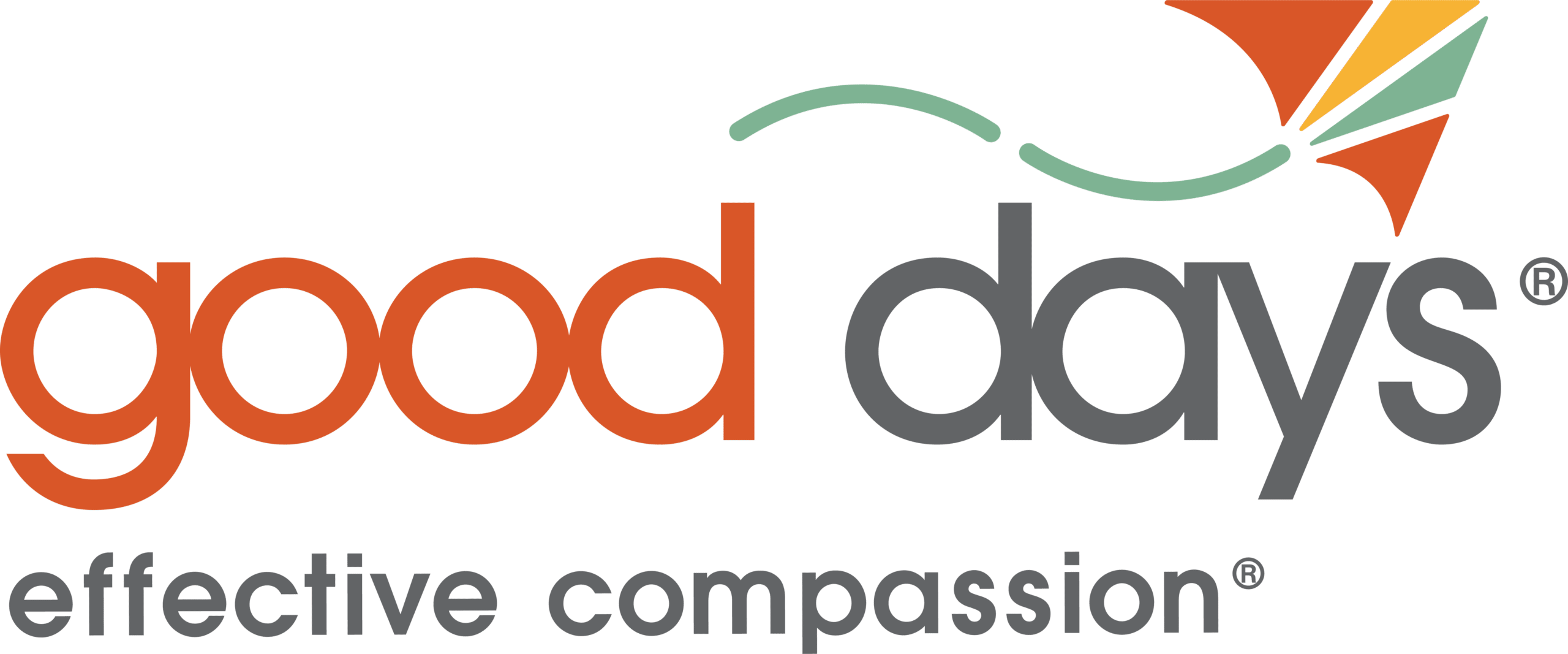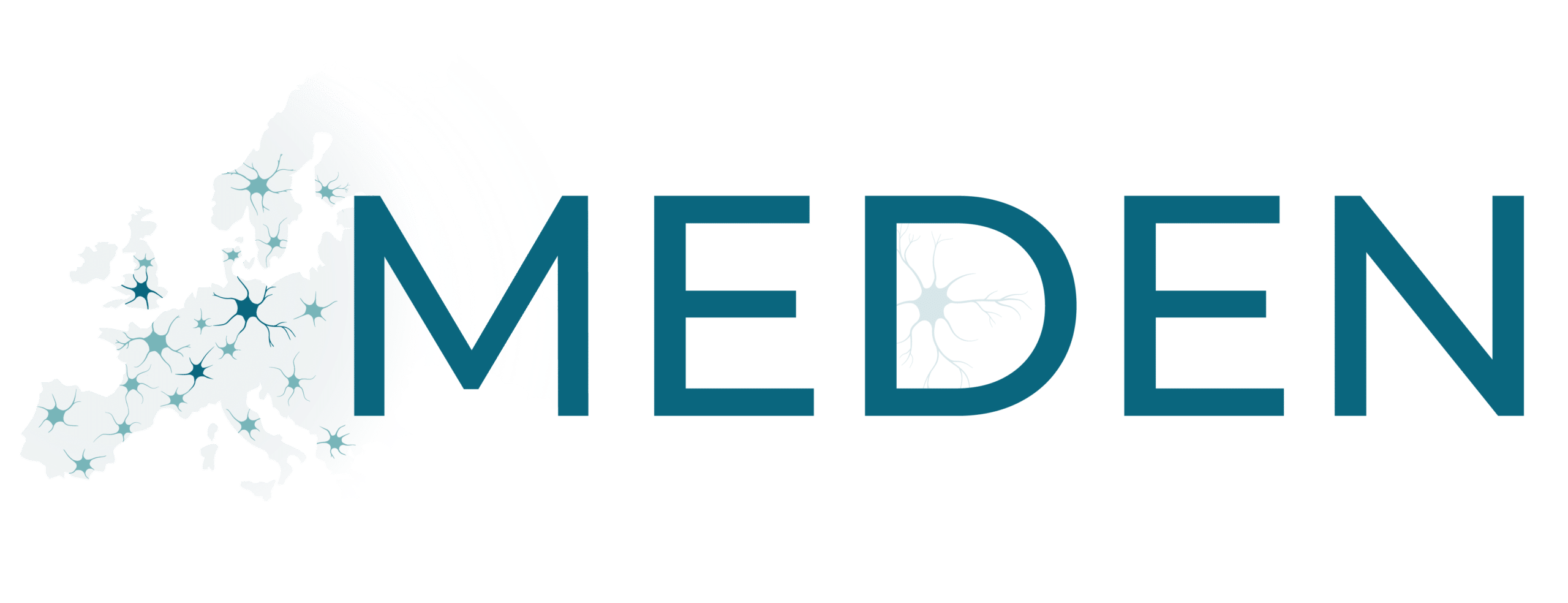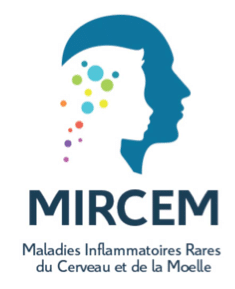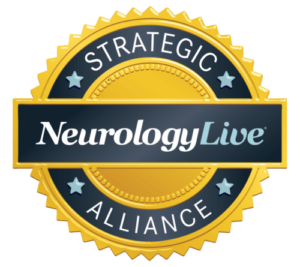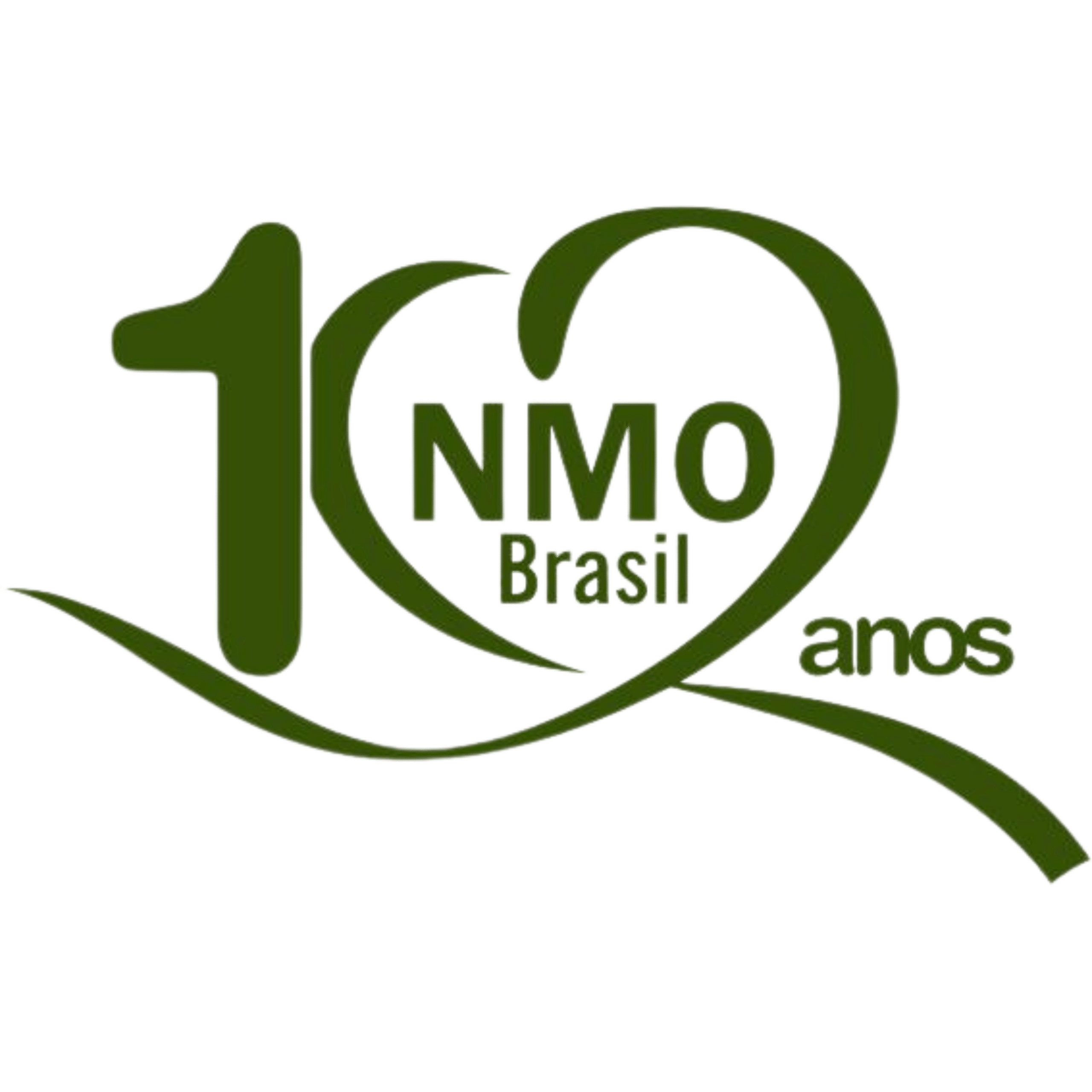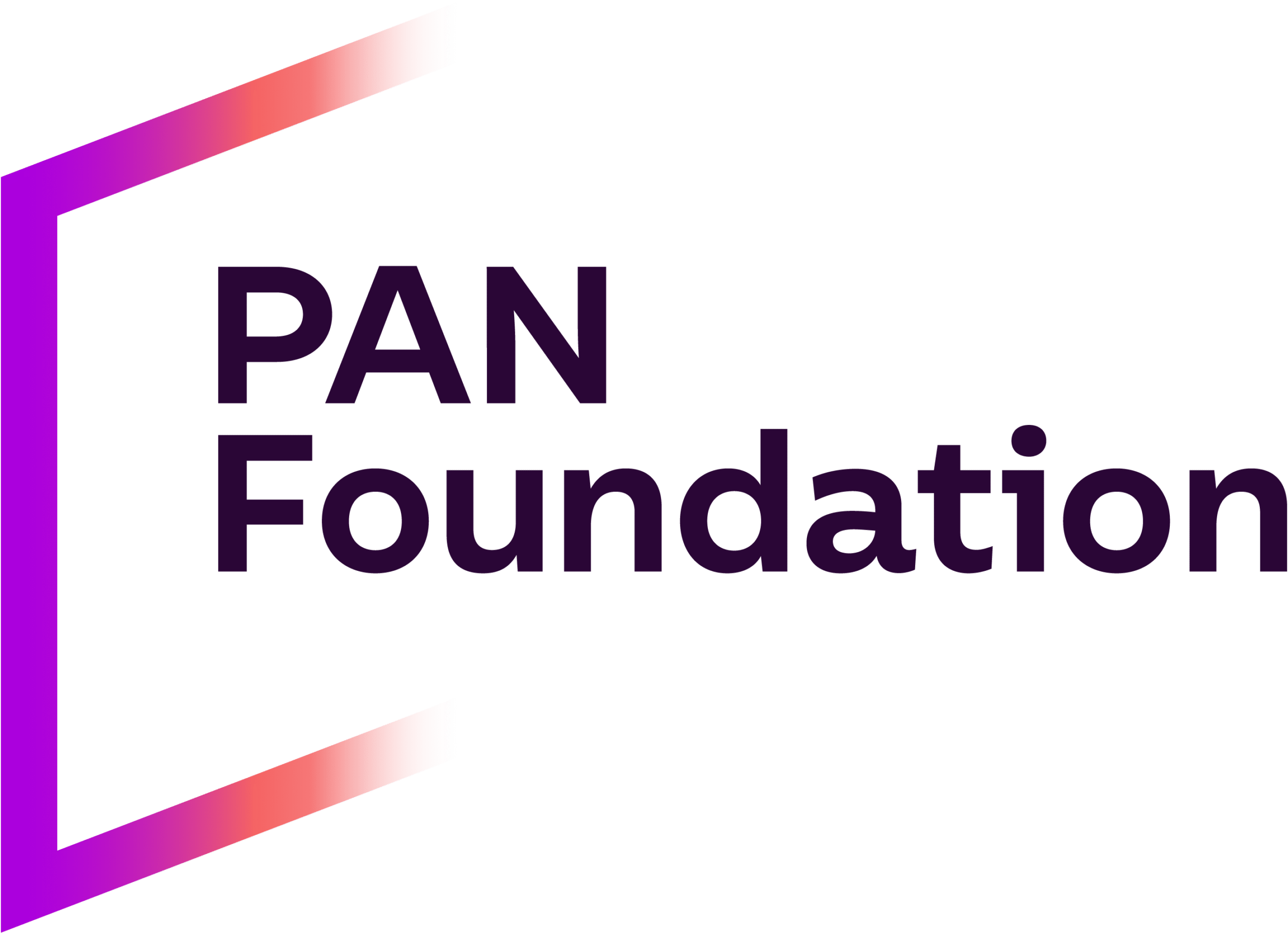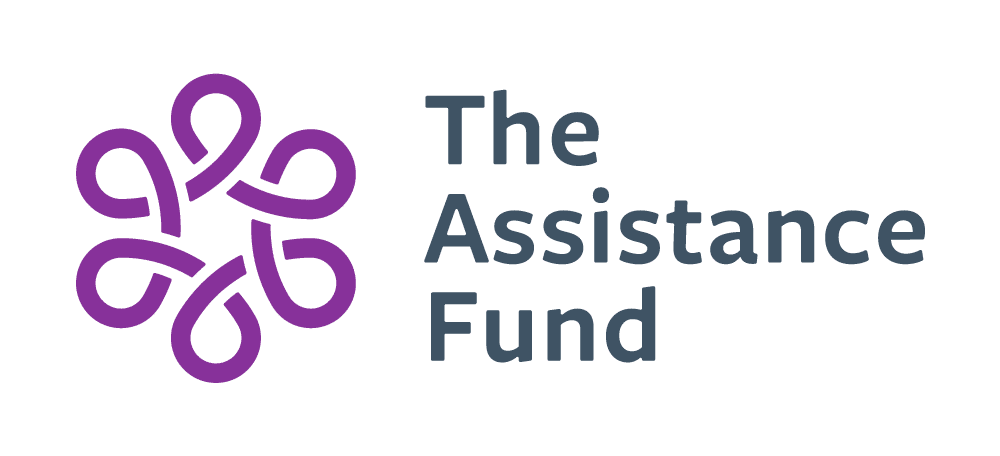Cutting-edge research on rare neuroimmune diseases like NMOSD and MOGAD is continually underway, and hundreds of relevant papers are published in high-quality medical journals every year. With a view to keeping patients, caregivers, and HCPs abreast of key R&D developments related to these diseases, TSF presents short summaries of relevant research papers in patient-friendly language.
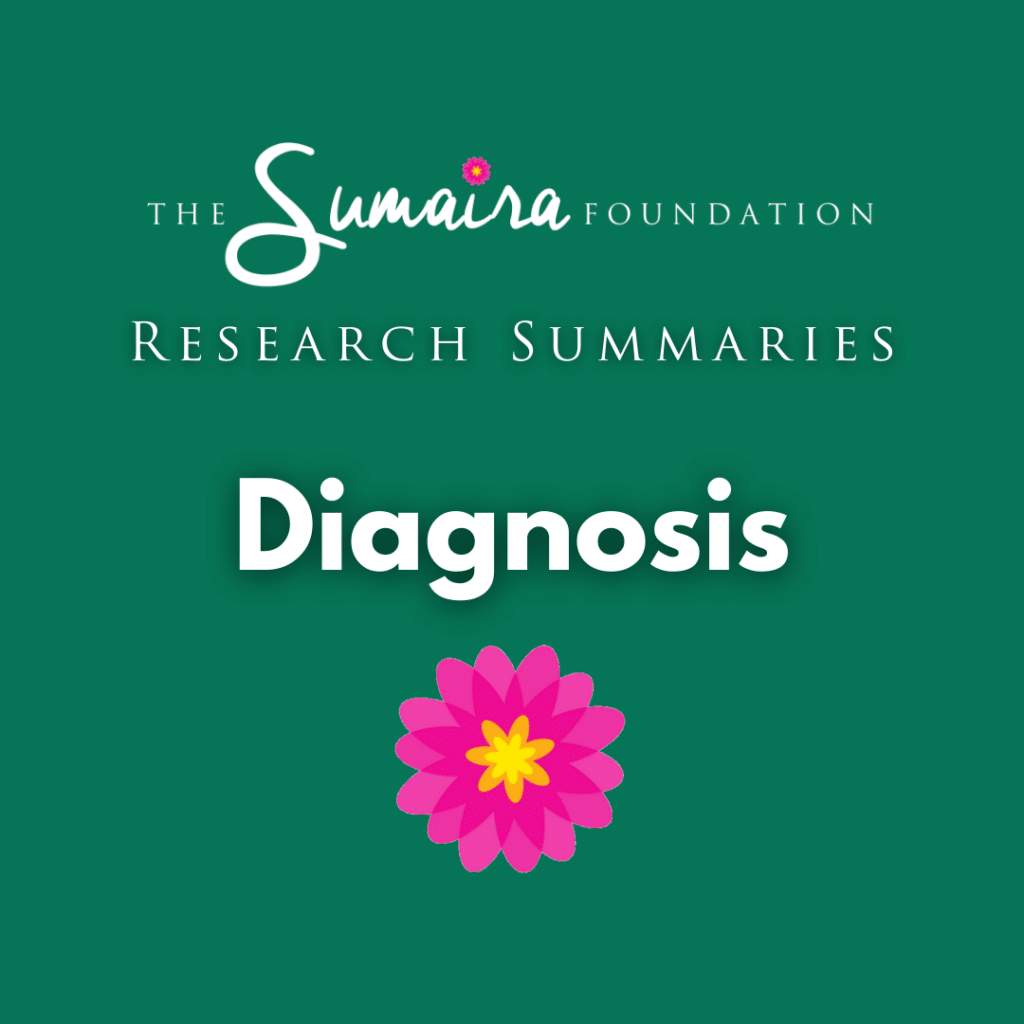
Journal: Neurology; June 13, 2024
Author(s): James A. Varley, Dimitrios Champsas, Timothy Prossor, Giuseppe Pontillo, Omar Abdel-Mannan, Zhaleh Khaleeli, Axel Petzold, Ahmed T. Toosy, Sachid A. Trip, Heather Wilson, Dermot H. Mallon, Cheryl Hemingway, Kshitij Mankad, Michael Kin Loon Chou Andrew J. Church, Melanie S. Hart, Michael P. Lunn, Wallace Brownlee, Yael Hacohen, and Olga Ciccarelli
Testing the validity of the 2023 International Diagnostic Criteria for MOGAD in a selected group of adults and children
In 2023, international experts in the field of neuroimmunology came in agreement and published international diagnostic criteria for MOGAD.
This study aimed to validate those diagnostic criteria in real-world clinical settings. The authors used data of 539 patients (135 children and 404 adults) who had been diagnosed with MOGAD between 2018 and 2022 in 2 specialist hospitals and reevaluated those patients’ cases against the new diagnostic criteria (that is, retrospectively). As per the results, MOGAD was accurately diagnosed when the criteria were followed. The accuracy of the criteria in this regard was comparable with the best judgment of expert neurologists. The diagnostic accuracy achieved when the criteria were followed was better for children than for adults. Apart from testing positive for anti-MOG antibodies, patients should show at least one clinical or MRI feature listed in the criteria.
Related article: Diagnosis of myelin oligodendrocyte glycoprotein antibody-associated disease: International MOGAD Panel proposed criteria
Free Access: Full text
Read the full text
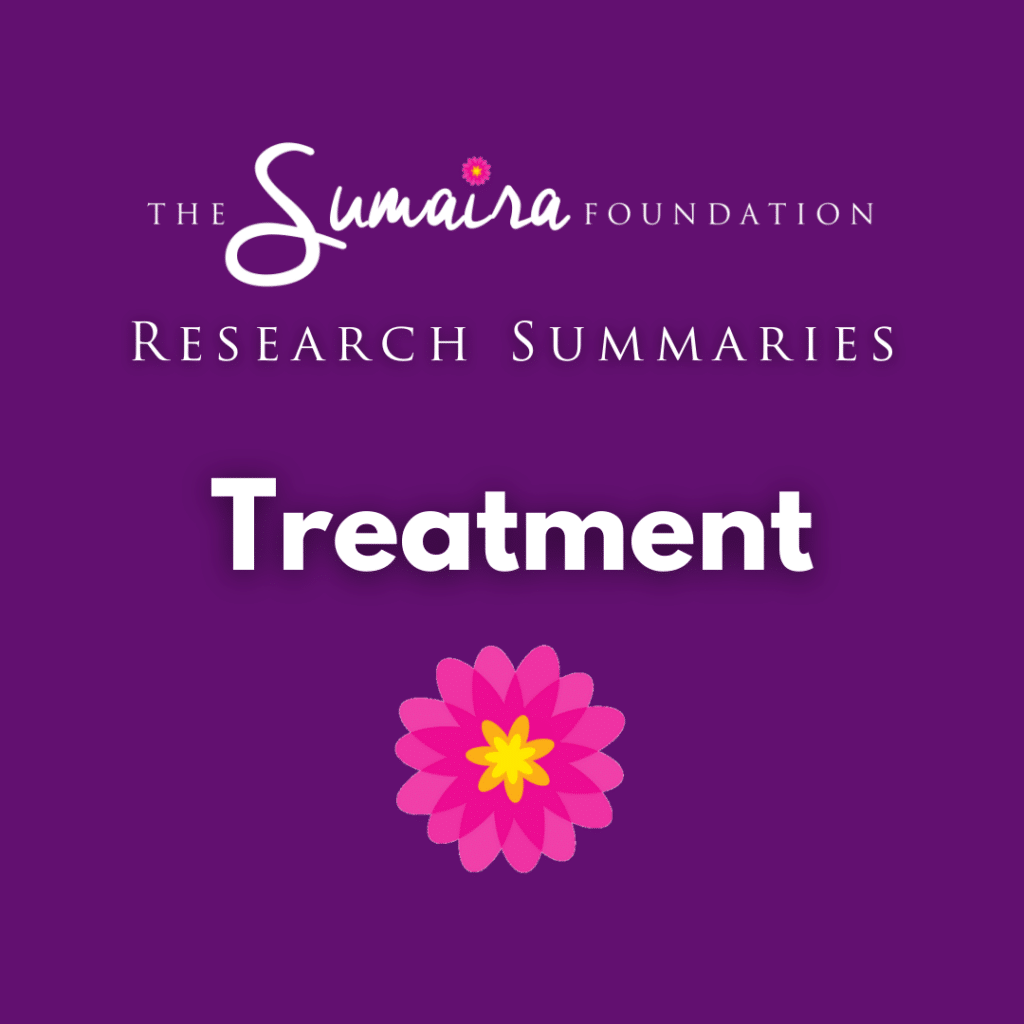
Journal: CNS Neuroscience & Therapeutics; May 24, 2024
Author(s): Yun Xu, Huabing Wang, Tian Song, Linlin Yin, Yajun Yao, Yuzhen Wei, Hengri Cong, Jiali Sun, Xinghu Zhang, De-Cai Tian
How safe and effective are plasma exchange and immunoadsorption for NMOSD attacks?
Plasma exchange and immunoadsorption (a blood-cleaning method that eliminates disease-causing antibodies) are commonly used to treat NMOSD attacks. This study assessed how effective these treatments were when given in combination with steroids (intravenous methylprednisolone) during NMOSD attacks as opposed to when steroids were given alone. The results showed that patients who received plasma exchange and immunoadsorption along with steroid treatment had better and more long-lasting improvement in their neurological symptoms over six months than those who received steroids alone. The combination therapy was also found to be safe and well tolerated.
Free Access: Full text
Read the full text

Journal: Neurology; April 9, 2024
Author(s): Stacey Clardy, Sean Pittock, Orhan Aktas, Jin Nakahara, Noriko Isobe, Diego Centonze, Sami Fam, Adrian Kielhorn, Jeffrey Yu, Jeroen Jansen, and Ina Zhang
How does ravulizumab compare with other approved treatments for NMOSD?
Ravulizumab has recently been approved in the US and Europe for the treatment of NMOSD. This study aimed to assess how well, compared to the other approved treatments, ravulizumab could prevent relapses in adults with NMOSD who test positive for the aquaporin-4 antibody (AQP4-IgG). The authors carefully studied all the existing published papers and used statistical modelling methods to compare how the different treatments would work. Two factors were considered to assess how well the treatments worked:
- Time to first relapse, that is, the time between treatment starting and the patient having a relapse
- Annualized relapse rate, that is, the average number of relapses a patient has in a year.
The treatments were assessed both when given alone (monotherapy) and when combined with other immunosuppressive therapies.
When given alone, ravulizumab reduced the time to the first relapse by 90% compared to satralizumab and inebilizumab but had similar effects as eculizumab. Similarly, given alone, ravulizumab reduced the average number of relapses per year by 98% compared to satralizumab and inebilizumab but had similar effects as eculizumab. When combined with other immunosuppressive therapies, ravulizumab reduced the time to first relapse by 85% compared to satralizumab but had similar effects as eculizumab.
Related article: Efficacy and safety of ravulizumab in adults with anti-aquaporin-4 antibody-positive neuromyelitis optica spectrum disorder: outcomes from the phase 3 CHAMPION-NMOSD trial (S5.002)
Free Access: Abstract only
Abstract only
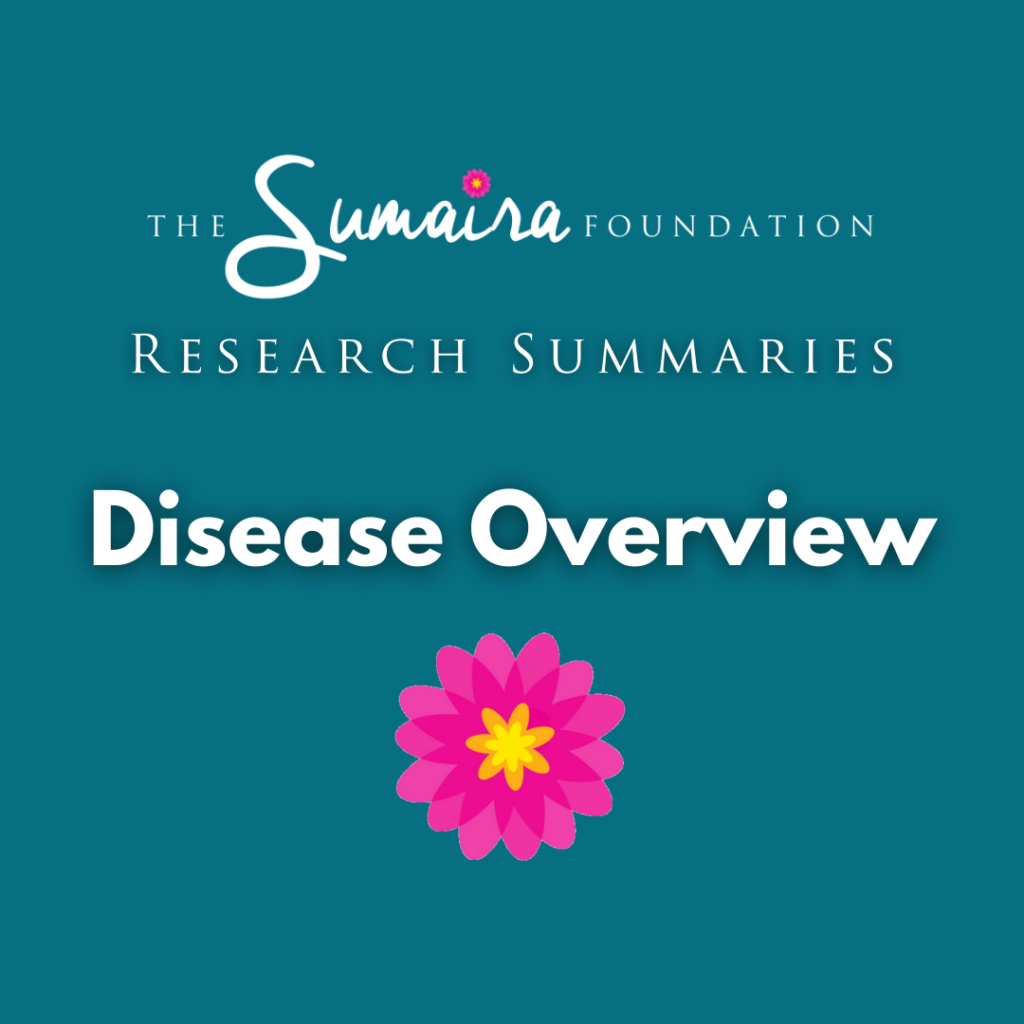
Journal: Current Opinion in Neurology; March 19, 2024
Author(s): Elisabeth Maillart, Kumaran Deiva, Romain Marignier
Clinical features of patients with MOGAD
This study is a review of previously published studies, aiming to summarize the clinical features of MOGAD. Over the last two decades, improvements in antibody testing methods have improved the accuracy of MOGAD diagnosis. Additionally, international criteria for MOGAD have been proposed for the first time. This study evaluates and explains each of the clinical features mentioned in the international criteria for MOGAD and also discusses potential challenges for the criteria to be applied in varied clinical settings. This study could be helpful for neurologists and patients looking to arrive at a treatment plan.
Related article: Myelin oligodendrocyte glycoprotein antibody-associated disease (MOGAD): current understanding and challenges
Free Access: Full text
read the full text

Journal: Cureus; March 13, 2024
Author(s): Noah J. Spillers, Patrick M. Luther, Norris C. Talbot, Evan J. Kidder, Connor A. Doyle, Salim C. Lutfallah, Alyssa G. Derouen, Sridhar Tirumala, Shahab Ahmadzadeh, Sahar Shekoohi, Alan D. Kaye, Giustino Varrassi
Optic neuritis — different forms, treatments, diagnosis, and prognosis
Optic neuritis can lead to partial or total permanent vision loss if left untreated. Accurate diagnosis and prompt treatment are essential to prevent long-term eye damage. Optic neuritis is a common symptom of MS, NMOSD, or MOGAD. This review helps physicians evaluate optic neuritis on the basis of MRI and visual tests as a to differentiate between MS, NMOSD, and MOGAD.
Free Access: Full text
read the full text

Journal: Neurology; March 6, 2024
Author(s): Gemma Olivé-Cirera, Arlette L. Bruijstens, Elianet G. Fonseca, Li-Wen Chen, Eva Caballero, Eugenia Martinez-Hernandez, Mar Guasp, Maria Sepúlveda, Laura Naranjo, Raquel Ruiz-García, Yolanda Blanco, Albert Saiz, Josep O. Dalmau, and Thaís Armangue for the Spanish Pediatric MOGAD Study Group
What does detection of MOG antibodies only in cerebrospinal fluid mean in children with inflammatory disorders of the central nervous system?
In children with inflammatory disorders of the central nervous system (CNS), MOG antibodies may be detected only in the cerebrospinal fluid (CSF), only in the blood serum, or in both CSF and blood serum. In this study, serum and CSF were tested for MOG antibodies in groups of children with various types of neurological disorders— (a) demyelinating syndromes, including acute disseminated encephalomyelitis (ADEM); (b) non-ADEM encephalitis; and (c) noninflammatory neurologic disorders. The results showed that MOG antibodies may be detected in children with CNS inflammatory disorders. MOG antibody detection only in the CSF and not in the serum is more likely to be indicative of multiple sclerosis.
Free Access: Abstract only
read the abstract
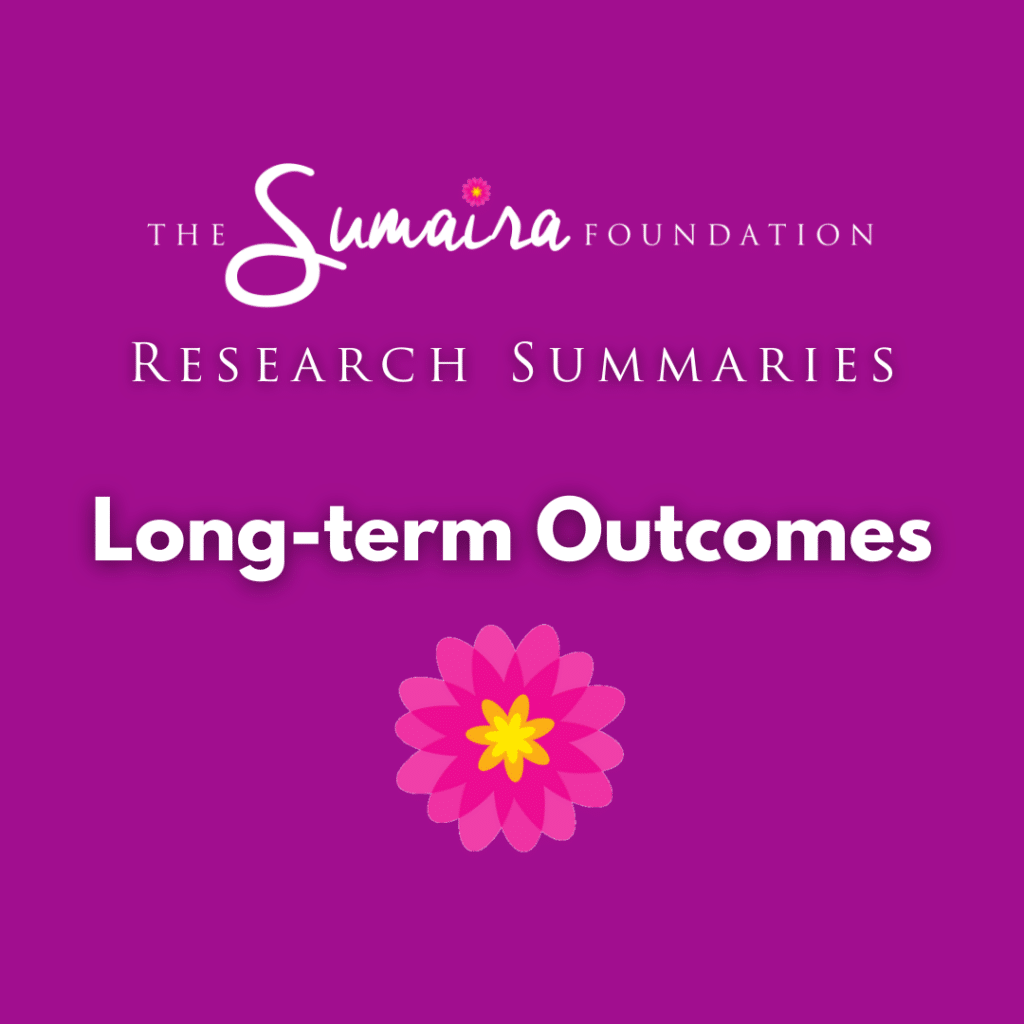
Journal: Journal of Neurological Sciences; March 1, 2024
Author(s): Negar Molazadeh, Philippe A. Bilodeau, Rebecca Salky, Gauruv Bose, Itay Lotan, Gabriela Romanow, Monique R. Anderson, Marcelo Matiello, Tanuja Chitnis, Michael Levy
What predicts a relapsing disease course after the first demyelination event in MOGAD patients?
MOGAD may manifest as a one-time occurrence of demyelination (monophasic) or as multiple episodes (relapsing) over time. This study followed 124 MOGAD patients (77 female) for a median duration of 4.8 years to determine what factors could predict whether patients would have relapses based on the first occurrence. During the follow-up time, 50 of the patients (40.3%) remained monophasic and 74 (59.7%) developed a relapsing course. The average time between the first episode and the second episode was 3 months. Relapsing disease was less likely if maintenance therapy with intravenous immunoglobulin, rituximab, and mycophenolate mofetil was initiated after the first attack. If the first attack itself involved multiple demyelination events, a relapsing course was more likely.
Free Access: Patient access via email
read the abstract
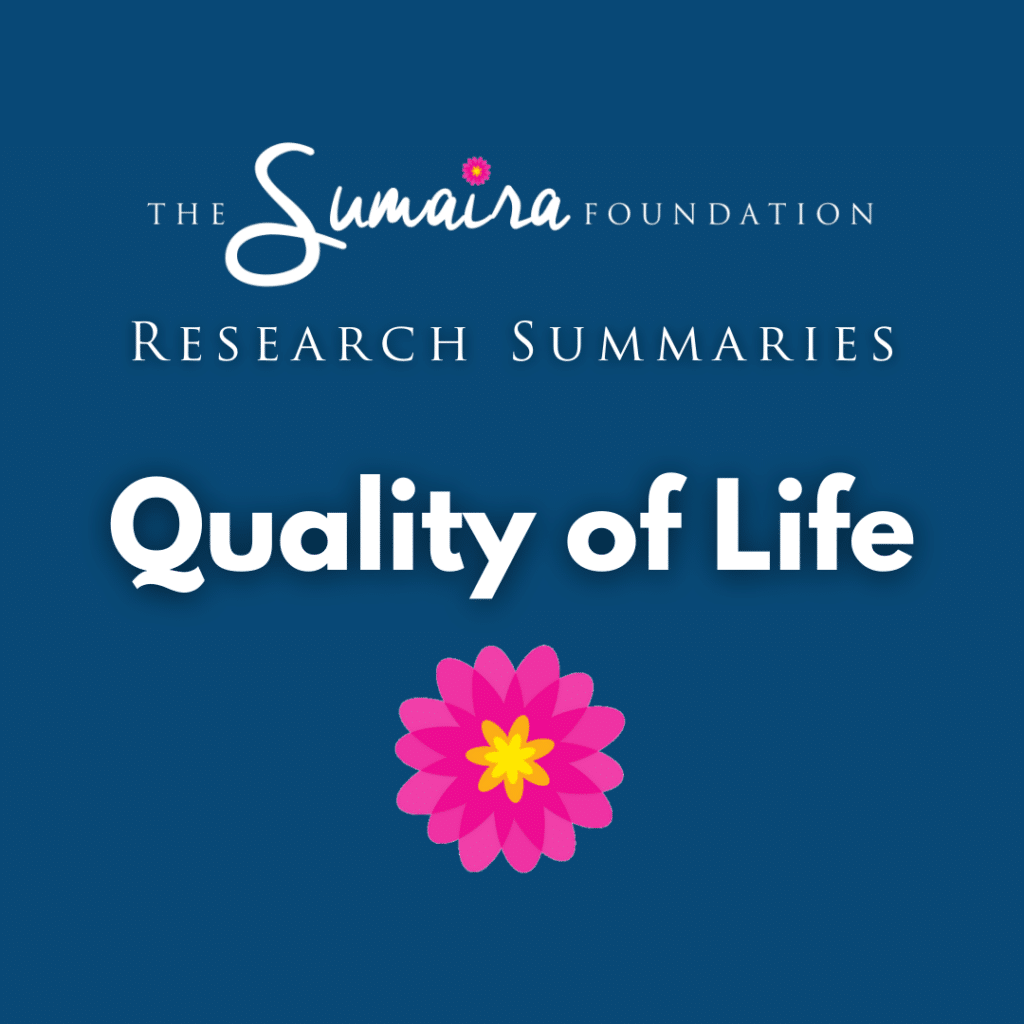
Journal: Annals of Clinical and Translational Neurology; February 20, 2024
Author(s): Isabella Gomez Hjerthen, Cristina Trápaga Hacker, William Meador, Ahmed Z. Obeidat, Lucas Horta, Farrah J. Mateen
Impact of NMOSD on employment and income in the US
In this study, working-age NMOSD patients participated in a survey designed to understand factors like loss of jobs, income, and work hours associated with this disease in the US.
Of 127 participants (mostly female and Caucasian; average diagnosis age 38.7 years, average disease duration 6.4 years), among whom 94% were under immunotherapy, 56% lost a job due to NMOSD. While 80% were employed before diagnosis, only 68% were after diagnosis. 36% of participants said they no longer worked outside the home, and 68% of those who were employed before diagnosis had to reduce their work hours by about 18 hours per month after. The growth in average annual income was lower for patients than the estimated average in the US. 60% of participants had a regular unpaid caregiver; 34% of caregivers changed their work hours or job to help manage NMOSD.
Free Access: Full text
read the full text

Journal: Nature; February 1, 2024
Author(s): Elie Dolgin
Why are women more likely than men to have autoimmune diseases?
Autoimmune diseases are up to 4 times more common in women than men, but there has been no evidence-based explanation for this until now, although several theories exist. New research on mice shows that this increased female association may be linked to a molecule called Xist found on X chromosomes. This molecule generates specific proteins when two X chromosomes are present, as in women, and some of these proteins seem to be linked to autoimmune diseases. When the Xist molecule was engineered into the DNA of male mice, these mice began developing signs of autoimmune disease almost as severe as in women. If these findings translate well to human studies, it could lead to new and better ways to diagnose and treat autoimmune diseases.
Free Access: Full text
read the abstract

Journal: Journal of Nervous System Disease; February 1, 2024
Author(s): Monique Anderson, Michael Levy
Long-term treatment approaches for NMOSD
Neuromyelitis optica spectrum disorder (NMOSD) is a rare inflammatory disorder of the central nervous system where myelin, the protective sheath surrounding neurons, gets eroded. occurs in approximately 1-5 individuals per 100,000 globally. It can affect the optic nerve, spinal cord, and brainstem. If left untreated, NMOSD attacks can lead to irreversible damage; therefore, treatment approaches focus on preventing repeat attacks. A better understanding of the underlying causes of NMOSD over the last 10 years has led to new FDA-approved treatments. This review discusses available approved and off-label long-term treatments used for NMOSD, treatments in the pipeline for adult and pediatric NMOSD patients, and considerations in pregnant patients and in the context of COVID-19. Patients would find this review helpful when discussing treatment options with their neurologist.
Free Access: Full text and plain-language summary
read the full text
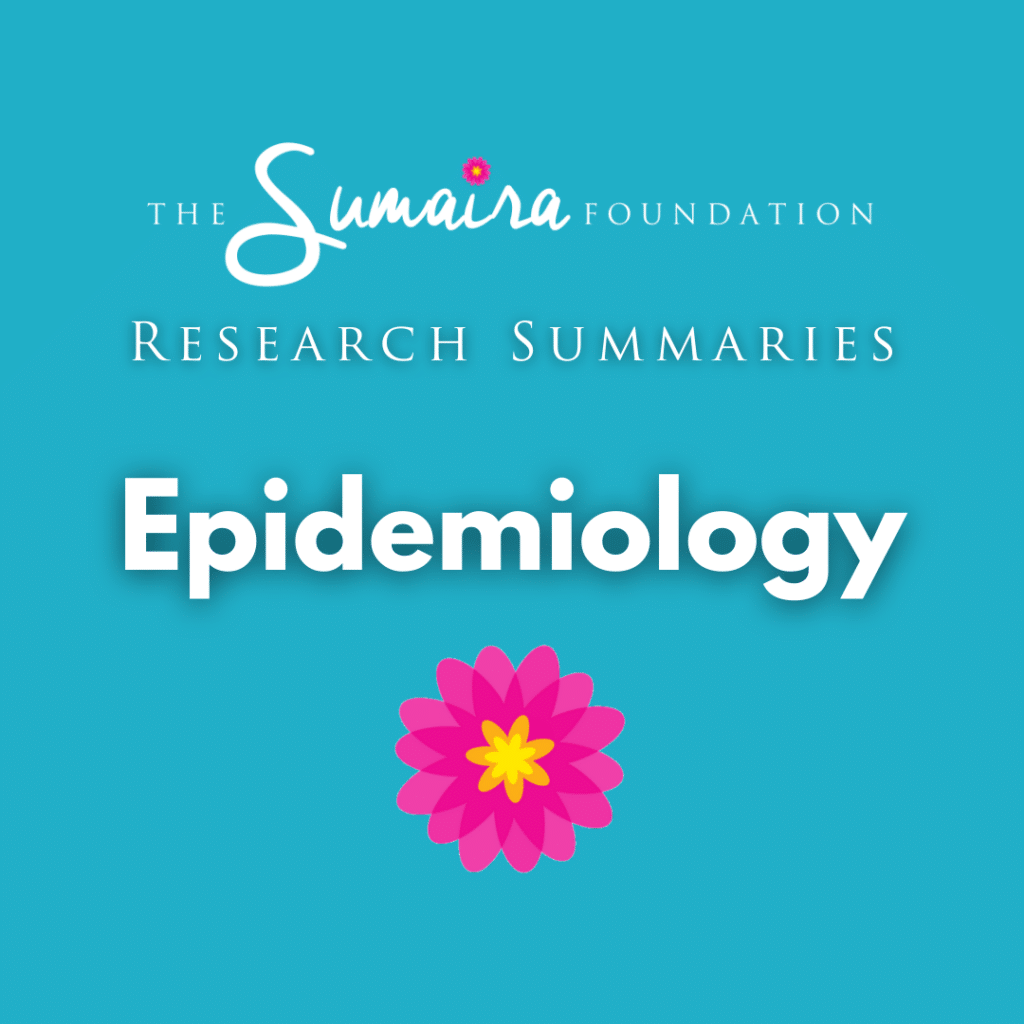
Journal: Multiple Sclerosis Journal; January 27, 2024
Author(s): Farren BS Briggs, Jacqueline Shaia
How common is NMOSD in the United States?
This study aimed to determine the number of people living with NMOSD in the US in 2022. The prevalence (number of people with the disease at a particular timepoint) was 6.88 per 100,000 people. The prevalence was highest in Blacks, followed by Asians and then Whites; more in females than in males. The study estimated that there were near 22,000 Americans living with NMOSD in 2022.
Free Access: Abstract only
read the abstract

Journal: Multiple Sclerosis and Related Disorders; December 28, 2023
Author(s): Haifen Liao, Ping Fan, Hengfang Ruan, Wei Qiu, Meifen Zhang, Huijuan L
How do NMOSD patients perceive and deal with their risk of relapses?
Recurrent relapses in NMOSD lead to increasing disability. To some extent, this can be avoided if patients accurately perceive and respond to their risk of having a relapse. This study used face-to-face, semi-structured interviews with 15 NMOSD patients to assess how patients perceive their risk of having a relapse and associated coping strategies. The themes that came up in the interviews included patients’ perceptions of the possibility and warning signs of a relapse, understanding and misconceptions about relapse triggers, consequences of a relapse, and coping strategies. The findings showed that the chances of a relapse tend to be underestimated by patients until they have had two or more relapses and overestimated after two or more relapses. A potential trigger for relapses, which can be easily managed, is non-compliance to recommended medication protocols. Relapses have significant negative effects on patients, and patients are therefore eager to discuss treatment planning and relapse management with their doctors.
Free Access: Abstract only
read the abstract

Journal: Annals of Neurology; December 12, 2023
Author(s): Ankelien Duchow, Judith Bellmann-Strobl, Tim Friede, Orhan Aktas, Klemens Angstwurm, Ilya Ayzenberg, Achim Berthele, Eva Dawin, Daniel Engels, Katinka Fischer, Martina Flaskamp, Katrin Giglhuber, Matthias Grothe, Joachim Havla, Martin W. Hümmert, Sven Jarius, Matthias Kaste, Peter Kern, Ingo Kleiter, Luisa Klotz, Mirjam Korporal-Kuhnke, Markus Kraemer, Markus Krumbholz, Tania Kümpfel, Lisa Lohmann, Marius Ringelstein, Paulus Rommer, Patrick Schindler, Charlotte Schubert, Carolin Schwake, Makbule Senel, Florian Then Bergh, Daria Tkachenko, Hayrettin Tumani, Corinna Trebst, Ioannis Vardakas, Annette Walter, Clemens Warnke, Martin S. Weber, Jonathan Wickel, Brigitte Wildemann, Alexander Winkelmann, Friedemann Paul, Jan-Patrick Stellmann, Vivien Häußler, on behalf of the Neuromyelitis Optica Study Group (NEMOS)
How does disability progress in NMOSD and MOGAD?
This study aimed to assess how disability progresses in patients with NMOSD and MOGAD in relation to the time since diagnosis, number of attacks, and patient’s age. The study involved 483 patients: 298 aquaporin-4 (AQP4)-positive NMOSD patients, 52 seronegative NMOSD patients (testing negative for both AQP4 and MOG antibodies), and 133 MOGAD patients. Disability progression was assessed in terms of
- when milestones were reached as per the Expanded Disability Status Scale (EDSS) and
- the frequency of relapses.
Even though the average number of relapses per year were similar between NMOSD and MOGAD patients, NMOSD patients tended to show greater levels of disability after fewer attacks than MOGAD patients. In all cases, patients who were older when they were first diagnosed were likelier to have higher levels of disability. But the risk of new disabilities developing decreased as the time living with the disease increased.
This research highlights that NMOSD can have an aggressive disease course compared to MOGAD in terms of disability accumulation. Prompt diagnosis and treatment is crucial to improve patient outcomes.
Related article:
Free Access: Full text
Read the full text

Journal: Neurology Neuroimmunology & Neuroinflammation; November 17, 2023
Author(s): Mirasol Forcadela, Chiara Rocchi, Daniel San Martin, Emily L Gibbons, Daniel Wells, Mark R Woodhall, Patrick J Waters, Saif Huda, Shahd Hamid
Accurate diagnosis of MOGAD relies on the timing of antibody tests
Diagnostic criteria for MOGAD have been recently published. This study aimed to validate these criteria in a real-world group of patients with atypical inflammation of the central nervous system. The authors evaluated clinical records of 408 patients with atypical signs of a demyelinating syndrome, who had been to the National NMOSD specialized service at The Walton Center NHS Foundation Trust between 2012 and 2023. They systematically applied the 2023 MOGAD diagnostic criteria and previous 2018 International Diagnostic Recommendations for MOG encephalomyelitis to these clinical records. They found that the 2023 MOGAD diagnostic criteria were an improvement on the 2018 recommendations, were highly sensitive and specific, and could accurately diagnose MOGAD in 97% patients. Timing of testing is important to support the diagnosis of MOGAD.
Free Access: Full text
read the full text

Journal: Frontiers in Neurology; September 15, 2023
Author(s): Jyh Yung Hor, Kazuo Fujihara
How common is MOGAD worldwide?
This study evaluated prior medical literature to determine how commonly MOGAD occurs and how widespread it is worldwide. The average age of disease development is approximately 30 years, and male and female sexes seem to have equal changes of being affected. Approximately 30% cases involve children. The prevalence of MOGAD (how many people are affected) is approximately 1.3–2.5/100,000, and the annual incidence (how often it occurs per year) is approximately 3.4–4.8 per million. Among white people, MOGAD appears to be slightly more prevalent than NMOSD with aquaporin-4 antibodies (AQP4+ NMOSD). Co-existing autoimmune disorders are less common in MOGAD than in AQP4+ NMOSD.
Free Access: Full text
read the full text

Journal: Multiple Sclerosis and Related Disorders; September 12, 2023
Author(s): Jianyi Liu, Xiaobo Zhang, Yi Zhong and Xianglin Liu
Prevalence of depression, anxiety, and sleep disturbances in a large group of NMOSD patients
Psychiatric disorders, such as depression, anxiety, and sleep disturbances, contribute substantially to the disease burden and reduce the health-related quality of life of NMOSD patients. This study assessed the prevalence of depression, anxiety, and sleep disturbances across 4213 NMOSD patients pooled from 31 different studies. The results showed a high prevalence of depression, anxiety, and sleep disturbances among NMOSD patients. This highlights the need for timely psychological monitoring and support for NMOSD patients.
Free Access: Patient access to full text via email
Patient access to full text via email

Journal: Journal of Neurology; September 7, 2023
Author(s): Tania Kümpfel, Katrin Giglhuber, Orhan Aktas, Ilya Ayzenberg, Judith Bellmann-Strobl, Vivien Häußler, Joachim Havla, Kerstin Hellwig, Martin W Hümmert, Sven Jarius, Ingo Kleiter, Luisa Klotz, Markus Krumbholz, Friedemann Paul, Marius Ringelstein, Klemens Ruprecht, Makbule Senel, Jan-Patrick Stellmann, Florian Then Bergh, Corinna Trebst, Hayrettin Tumani, Clemens Warnke, Brigitte Wildemann, Achim Berthele; Neuromyelitis Optica Study Group (NEMOS)
Updated recommendations for immediate attack treatment and long-term management of NMOSD
A group of experts called the neuromyelitis optica study group (NEMOS; see www.nemos-net.de) was founded in 2008 in the US to broaden the understanding of NMOSD and similar but distinct disorders, such as MOGAD. This paper, part 2 of 2, provides recommendations for NMOSD management considering the current available research and therapies.
The recommendations provided in the paper cover both aquaporin-4 (AQP4) seropositive (antibodies detected) and seronegative (antibodies not detected) NMOSD, including
- How to treat attacks
- How to prevent attacks
- Specific therapies based on mechanisms of action
- Classical immunosuppressants, namely, azathioprine, mycophenolate mofetil, low-dose oral glucocorticoids
- B Cell depletion therapies, namely, rituximab, inebilizumab,
- Complement inhibition therapies, namely, eculizumab, ravulizumab
- Interleukin-6 receptor blockade, namely, tocilizumab, satralizumab
- Other interventions such as stem cell therapy
- Ineffective and not recommended treatments
- Recommendations for double sero-negative NMOSD
- Sequencing and switching between therapies
- Decisions regarding therapy duration, pregnancy management, vaccination, and future therapies
Related article: Update on the diagnosis and treatment of neuromyelits optica spectrum disorders (NMOSD) – revised recommendations of the Neuromyelitis Optica Study Group (NEMOS). Part I: Diagnosis and differential diagnosis
Free Access: Full text
read the full text

Journal: Frontiers in Immunology; August 29, 2023
Author(s): Lekha Pandit, Anitha D’Cunha, Chaithra Malli and Akshatha Sudhir
Comparison of two diagnostic tests for MOGAD in an Indian population
The diagnosis of MOGAD poses many clinical challenges because the disease has many features similar to MS and NMOSD. This study compared two diagnostic techniques for MOGAD – (a) a live cell-based assay (LCBA) that is more expensive and requires more technical skills and infrastructure and a fixed cell-based assay (FCBA) that is commercially developed, cost-effective, and easier to conduct at scale. Whereas some earlier studies have shown that the LBCA is more effective and accurate than the FCBA for MOGA diagnosis, this study showed that the diagnostic value of both assays were similar. In India where this study was done, most patients are uninsured and medical costs are managed out-of-pocket, so these results offer hope for more cost-effective diagnostic screening at scale.
Free Access: Full text
Read the Full Text

Journal: European Journal of Neurology; July 11, 2023
Author(s): Pietro Zara, Alessandro Dinoto, Sara Carta, Valentina Floris, Davide Turilli, Adrian Budhram, Sergio Ferrari, Stefania Milia, Paolo Solla, Sara Mariotto, Eoin P. Flanagan, A. Sebastian Lopez Chiriboga, Elia Sechi
Non-demyelinating disorders that might be misdiagnosed as NMOSD
While it is well known that multiple sclerosis and MOGAD have similar features to NMOSD, and neurologists actively try to distinguish between these three diseases, there are a range of non-demyelinating diseases that seem similar to NMOSD and might be misdiagnosed. This study reviewed cases that were misdiagnosed as NMOSD. Conditions that might have some features in common with NMOSD and can be misdiagnosed include myelopathy, optic neuropathy, or both together, genetic/metabolic disorders, neoplasms, infections, vascular disorders, spondylosis, and other immune-mediated disorders. In many cases, misdiagnosis was because the diagnostic criteria for NMOSD were applied incorrectly. This review identifies some red flags physicians should pay attention to, to avoid misdiagnosis.
Related article: Diagnostic criteria for NMOSD
Free Access: Abstract only
read the abstract

Journal: Multiple Sclerosis Journal; July 10, 2023
Author(s): Itay Lotan, John J Chen, Yael Hacohen, Omar Abdel-Mannan, Sara Mariotto, Saif Huda, Emily Gibbons, Adi Wilf-Yarkoni, Mark A Hellmann, Hadas Stiebel-Kalish, Sean J Pittock, Eoin P Flanagan, Negar Molazadeh, Monique Anderson, Rebecca Salky, Gabriela Romanow, Patrick Schindler, Ankelien Solveig Duchow, Friedemann Paul and Michael Levy
Effectiveness of IVIG treatment for acute attacks in MOGAD
In this retrospective study, case details of 39 MOGAD patients (53.8% female, median age 23 years) who had been treated with intravenous immunoglobulins (IVIG) were reviewed to assess the therapeutic benefit of IVIG. The results showed that IVIG treatment improved the patients’ disability scores and visual acuity. IVIG may be an effective treatment option for acute MOGAD attacks. Larger-scale clinical trials are needed to validate these results.
Free Access: Abstract only
Read the Abstract

Journal: Multiple Sclerosis and Related Disorders; July 8, 2023
Author(s): Jie Wang, Keyu Yang, Fang Zhang, Yujie Yi, Jing Wang
Could certain clinical factors predict relapses in MOGAD?
About 50% of patients with MOGAD tend to have relapses. This study, conducted on 24 MOGAD patients in China, aimed to determine if any specific clinical features might predict relapses in MOGAD. The results showed that the most common clinical features of MOGAD are loss of vision, numbness in the limbs or face, and eye pain. Patients who have optic neuritis, a history of immune disease, high levels of anti-MOG antibodies (≥1:100), and/or high levels of leukocytes in the cerebrospinal fluid (above 50/mm3) may be more likely to have relapses.
Related article: Can anti-MOG-antibody levels predict relapses in MOGAD?
Free Access: Abstract only
read the abstract

Journal: Annals of Neurology; July 3, 2023
Author(s): Bo Chen, Enrique Gomez-Figueroa, Vyanka Redenbaugh, Anna Francis, Chanjira Satukijchai, Yan Wu, Silvia Messina, Mario Sa, Mark Woodhall, Friedemann Paul, Neil P. Robertson, Ming Lim, Evangeline Wassmer, Rachel Kneen, Saif Huda, Camilla Blain, Christopher Halfpenny, Cheryl Hemingway, Eoin O'Sullivan, Jeremy Hobart, Leonora K. Fisniku, Roswell J. Martin, Ruth Dobson, Sarah A. Cooper, Victoria Williams, Patrick Waters, John J. Chen, Sean J. Pittock, Sithara Ramdas, Maria Isabel Leite, Eoin P. Flanagan, Ruth Geraldes, Jacqueline Palace
Does an early relapse after the first episode increase the risk of a relapsing pattern of MOGAD?
MOGAD can occur as a single isolated episode (monophasic) or as multiple episodes (relapsing). When the disease relapses repeatedly, there is an increased risk of long-term disability. This study aimed to determine whether an early relapse occurring within 1 year from the first episode (called “disease onset”) could be a predictor of how the disease would progress over the long term in MOGAD patients. 289 patients — a mix of adults and children — with MOGAD were followed for at least 2 years across 6 specialized medical centers. The results showed that in general, early relapses within 1 year from disease onset increased the risk of the long-term relapsing disease. It does not seem sufficient for patients with early relapses to receive only corticosteroid treatment; instead adult patients should be considered for immunosuppressant therapy as soon as possible.
Related article: Predictors of relapsing disease course following index event in myelin oligodendrocyte glycoprotein antibody-associated disease (MOGAD)
Free Access: Abstract only
Read the abstract

Journal: Neurology Neuroimmunology & Neuroinflammation; May 31, 2023
Author(s): Friedemann Paul, Romain Marignier, Jacqueline Palace, Georgina Arrambide, Nasrin Asgari, Jeffrey L. Bennett, Bruce Anthony Campbell Cree, Jérôme De Sèze, Kazuo Fujihara, Ho Jin Kim, Rebecca Hornby, Saif Huda, Najib Kissani, Ingo Kleiter, Satoshi Kuwabara, Marco Lana-Peixoto, Lisa Law, M. Isabel Leite, Lekha Pandit, Sean J. Pittock, Chao Quan, Sudarshini Ramanathan, Dalia Rotstein, Albert Saiz, Douglas Kazutoshi Sato, Adi Vaknin-Dembinsky
Recommendations for management of NMOSD with eculizumab, inebilizumab, and satralizumab: Consensus among international experts
This study aimed to get consensus from an international panel of 24 NMOSD experts on management of the disease and recommendations for the three recently approved therapies: eculizumab, inebilizumab, and satralizumab. The 24 clinical experts were asked to complete a questionnaire on NMOSD management, using free-text responses based on available research evidence and their own clinical experience. Responses were used to generate draft statements on NMOSD-related themes, and panelists anonymously indicated their level of agreement with each statement. Twenty-five statements were agreed in total: 11 on starting with or switching between eculizumab, inebilizumab, and satralizumab; 3 on monotherapy (treatment with one of these drugs alone) and/or combination therapy; 7 on safety and patient population considerations; 3 on biomarkers (blood levels and other measures) and/or patient-reported outcomes; and 1 on research gaps. This consensus paper can serve as a useful guide to clinicians and patients for shared decision-making in NMOSD management.
Free Access: Full text
read the full text

Journal: Journal of Neurology; May 8, 2023
Author(s): Abdullah Al-Ani, John J Chen, Fiona Costello
MOGAD: Current understanding and challenges
MOGAD accounts for more cases of demyelinating conditions in children (30% than it does in adults (5%). New diagnostic criteria for MOGAD have recently been proposed, which highlight the following as key symptoms of MOGAD: optic nerve or spinal cord inflammation, widespread brain inflammation [acute disseminated encephalomyelitis (ADEM)], specific deficits in one or more location in the bran, issues with the brainstem or cerebellum, and brain inflammation-triggered seizures as the main defining features of this disease. Despite these diagnostic criteria, diagnosing MOGAD may be challenging because the disease overlaps with MS and NMOSD in many aspects of manifestation. This study outlines what currently available evidence shows about MOGAD and the challenges associated with diagnosing it and distinguishing it from MS and NMOSD. This review could help clinicians determine what specific features to pay attention to, when to perform MOG-antibody tests, and how to interpret these antibody tests in tandem with clinical features when diagnosing MOGAD.
Free Access: Full text
read the full text

Journal: Neurology; April 25, 2023
Author(s): Nanthaya Tisavipat, Adi Wilf-Yarkoni, Eoin Flanagan, Vyanka Redenbaugh, Yoel Schwartzmann, Mark Hellmann, Assaf Tolkovsky, Hadas Stiebel-Kalish, Itay Lotan, Michael Levy, Rebecca Salky, Adi Vaknin-Dembinsky, Esther Ganelin-Cohen, Alfonso Lopez, Sean Pittock and John Chen
Long-term outcomes in MOGAD patients not receiving any immunotherapy apart from steroids
In this retrospective study, medical charts of 55 MOGAD patients were reviewed. The patients included (1) were diagnosed with MOGAD, (2) had visited one of the hospitals participating in the study, and (3) had not been on any immunotherapy other than steroids for at least the 3-year observation period. The results showed that without long-term immunotherapy, some MOGAD patients had relapses, but overall did not have a significant decline in their disability scores or visual acuity.
Free Access: Abstract only
Read the Abstract

Journal: Neurology; April 25, 2023
Author(s): Sean Pittock, Michael Barnett, Jeffrey Bennett, Achim Berthele, Jérôme de Sèze, Michael Levy, Ichiro Nakashima, Celia Oreja Guevara, Jacqueline Palace, Friedemann Paul, Carlo Pozzilli, Kerstin Allen, Yasmin Mashhoon, Marcus Yountz, and Ho Jin Kim
CHAMPION-NMOSD clinical trial: efficacy and safety of ravulizumab in NMOSD patients testing positive for AQP-4
Ravulizumab is a therapy for NMOSD that has recently (in 2024) been approved in the US, following the clinical trial called CHAMPION-NMOSD. Ravulizumab is similar to eculizumab in its mechanism of action. This clinical trial study evaluated the safety and efficacy of ravulizumab in adult patients who tested positive for aquaporin-4 antibodies (AQP4+). In the trial, patients receiving ravulizumab showed a reduced risk of relapse and better disability scores than those receiving the placebo. While there were side effects, the overall safety of ravulizumab was similar to its documented safety profile in other conditions where it has been approved. Patients were followed up for over 1.5 years on average, and the safety and efficacy results remained the same throughout this period.
Free Access: Abstract only
read the abstract

Journal: Journal of Neurology; April 6, 2023
Author(s): Sven Jarius, Orhan Aktas, Ilya Ayzenberg, Judith Bellmann-Strobl, Achim Berthele, Katrin Giglhuber, Vivien Häußler, Joachim Havla, Kerstin Hellwig, Martin W Hümmert, Ingo Kleiter, Luisa Klotz, Markus Krumbholz, Tania Kümpfel, Friedemann Paul, Marius Ringelstein, Klemens Ruprecht, Makbule Senel, Jan-Patrick Stellmann, Florian Then Bergh, Hayrettin Tumani, Brigitte Wildemann, Corinna Trebst; Neuromyelitis Optica Study Group (NEMOS)
Updated recommendations for the diagnosis of NMOSD
A group of experts called the neuromyelitis optica study group (NEMOS; see www.nemos-net.de) was founded in 2008 in the US to broaden the understanding of NMOSD and similar but distinct disorders, such as MOGAD. NEMOS has published several US-wide and international multicenter investigations and practical recommendations on the diagnosis and treatment of NMOSD and MOGAD. This paper, part 1 of 2, updates the last NEMOS recommendations for the diagnosis of NMOSD, which were published in 2014.
The recommendations include:
- When to consider NMOSD? Factors based on clinical investigation and its general prevalence in certain populations
- How should NMOSD be diagnosed?
- What alternative diagnoses should be considered?
- Practical recommendations for antibody testing, cerebrospinal fluid analysis, other laboratory tests, MRI, and vision/eye function tests
- A commentary on unmet needs
Patients can refer to this paper for shared decision-making with doctors at the time of diagnosis.
Related article: Update on the diagnosis and treatment of neuromyelitis optica spectrum disorders (NMOSD) – revised recommendations of the Neuromyelitis Optica Study Group (NEMOS). Part II: Attack therapy and long-term management
Free Access: Full text
read the full text

Journal: Annals of Clinical and Translational Neurology; March 31, 2023
Author(s): Jonathan D. Santoro, Timothy Beukelman, Cheryl Hemingway, Suvi R. K. Hokkanen, Frank Tennigkeit, Tanuja Chitnis
Early symptoms and disease progression for MOGAD in children
MOGAD has different symptomatic and clinical features in children than adults. This study aimed to evaluate how MOGAD first shows up and what the disease course looks like in children, by carefully reviewing papers published on MOGAD in children between January 2010 and January 2022. The most common initial symptom, especially in children below the age of 5 was acute disseminated encephalomyelitis (ADEM), which means intense inflammation of the brain and spinal cord. Optic neuritis (inflammation of the optic nerve) and transvers myelitis were the next most common early symptoms. About 25% children have at least one relapse, usually within 3 years of the first episode. The relapse often includes optic neuritis, even if there was no optic neuritis in the first episode. It remains unclear what factors may increase the risk of a relapse.
Related article: Clinical characteristics of patients with myelin oligodendrocyte glycoprotein antibodies
Free Access: Full text
Read the full text

Journal: Eye; March 16, 2023
Author(s): Negar Moheb, John J. Chen
Features of optic neuritis and associated clinical signs in NMOSD and MOGAD
Optic neuritis is a common occurrence that can lead to vision loss in multiple sclerosis, NMOSD, and MOGAD. The features of optic neuritis are well described for multiple sclerosis but not for NMOSD and MOGAD. These diseases differ in severity, rate of recurrence, and overall outcomes, which is why prompt and accurate diagnosis and management is essential. This review article summarizes the characteristic neuro-ophthalmological signs in NMOSD and MOGAD, serum biomarkers and MRI findings, as well as immediate relapse management and long-term therapies used for NMOSD and MOGAD.
Related article: Optic neuritis — different forms, treatments, diagnosis, and prognosis
Free Access: Abstract only
Abstract only

Journal: Journal of Investigative Medicine; March 13, 2023
Author(s): Jacqueline F Rosenthal, Benjamin M Hoffman, William R Tyor
A review of MS, NMOSD, and MOGAD
Although multiple sclerosis is the most common central nervous system (CNS) inflammatory demyelinating disorder, NMOSD and MOGAD share some clinical characteristics of multiple sclerosis, such as optic neuritis and myelitis, which can make a specific diagnosis challenging. However, it is important to distinguish these diseases because they can have distinct clinical features and prognosis and require different treatments. Careful review of the patients’ history, neurological exam, imaging, and/or spinal fluid results are essential to making an accurate diagnosis. This review examines the clinical presentation, diagnosis, and natural history of these inflammatory CNS disorders.
Free Access: Abstract only
Read the abstract

Journal: Annals of Neurology; March 3, 2023
Author(s): Sean J. Pittock, Michael Barnett, Jeffrey L. Bennett, Achim Berthele, Jérôme de Sèze, Michael Levy, Ichiro Nakashima, Celia Oreja-Guevara, Jacqueline Palace, Friedemann Paul, Carlo Pozzilli, Marcus Yountz, Kerstin Allen, Yasmin Mashhoon, Ho Jin Kim
Ravulizumab in NMOSD patients testing positive for AQP4
Ravulizumab is a therapy for NMOSD that has recently (in 2024) been approved in the US, following the clinical trial called CHAMPION-NMOSD. This paper, which reviews data from the clinical trial, shows the safety and efficacy of ravulizumab in adult NMOSD patients who tested positive for aquaporin-4 antibodies (AQP4+). Ravulizumab was found to significantly reduce the risk of relapse in patients with AQP4+ NMOSD, with similar levels of safety as eculizumab for NMOSD and as ravulizumab in all other conditions where it has been approved.
Free Access: Full text
read the full text

Journal: Journal of Neurology, Neurosurgery, and Psychiatry; March 1, 2023
Author(s): Matteo Gastaldi, Thomas Foiadelli, Giacomo Greco, Silvia Scaranzin, Eleonora Rigoni, Stefano Masciocchi, Sergio Ferrari, Chiara Mancinelli, Laura Brambilla, Margherita Mancardi, Thea Giacomini, Diana Ferraro, Marida Della Corte, Antonio Gallo, Massimiliano Di Filippo, Luana Benedetti, Giovanni Novi, Maurizio Versino, Paola Banfi, Raffaele Iorio, Lucia Moiola, Emanuela Turco, Stefano Sartori, Margherita Nosadini, Martino Ruggieri, Salvatore Savasta, Elena Colombo, Elena Ballante, Sven Jarius, Sara Mariotto, Diego Franciotta; NINA study group
Can anti-MOG-antibody levels predict relapses in MOGAD?
Testing for anti- MOG antibodies is an important diagnostic tool for patients with MOGAD. But little is known about how often the antibody tests should be repeated and what persistent high antibody levels might mean for the disease course. This study was conducted on 102 MOGAD patients in Italy. The results showed that patients with persistent positive anti-MOG-antibody tests and high levels antibodies over time are more likely to have relapses.
Related article: What predicts a relapsing disease course after the first demyelination event in MOGAD patients?
Free Access: Abstract only
read the abstract

Journal: The Lancet Neurology; March 1, 2023
Author(s): Brenda Banwell, Jeffrey L Bennett, Romain Marignier, Ho Jin Kim, Fabienne Brilot, Eoin P Flanagan, Sudarshini Ramanathan, Patrick Waters, Silvia Tenembaum, Jennifer S Graves, Tanuja Chitnis, Alexander U Brandt, Cheryl Hemingway, Rinze Neuteboom, Lekha Pandit, Markus Reindl, Albert Saiz, Douglas Kazutoshi Sato, Kevin Rostasy, Friedemann Paul, Sean J Pittock, Kazuo Fujihara, Jacqueline Palace
International consensus diagnostic criteria for MOGAD
Until recently MOGAD did not have well-defined and universally recognized diagnostic criteria to allow it to be distinguished from other demyelinating disorders such as MS and NMOSD. International experts in the field of neuroimmunology discussed and proposed in agreement some criteria that could be applied for diagnosis of MOGAD in patients globally across all age groups (both children and adults). This paper outlines the proposed criteria in detail, including the symptoms and clinical features, what neurologists should look for in MRI (typical areas of brain, spinal cord, and optic nerve involvement, what laboratory tests should be conducted (including blood serum and cerebrospinal fluid). One key factor for the diagnosis is the detection of anti-MOG antibodies. Neurologists diagnosing MOGAD need to make sure that MS is ruled out, but not all patients with MS need to be evaluated for MOGAD. While these criteria still need to be validated in actual clinical settings, they have the potential to improve the accuracy and speed of MOGAD diagnosis and thus improve the outcomes for patients.
Related article: Validation of the 2023 International Diagnostic Criteria for MOGAD in a Selected Cohort of Adults and Children
Free Access: Full text after registration
Read the full text

Journal: Neurology and Therapy; February 24, 2023
Author(s): Ju-Hong Min, Marco Capobianco, Carly Welsh, Patricia Lobo, Gabrielle deFiebre, Marco Lana-Peixoto, Dean M. Wingerchuk, Jiawei Wang, Marius Ringelstein
NMOSD management in real-life settings globally
This study evaluated treatment practices for NMOSD globally by conducting an online survey among 389 neurologists in the USA, Germany, Italy, Brazil, South Korea, and China (representing data from 1185 patients) and conducting telephonic interviews with 33 patients receiving maintenance therapy for NMOSD. Questions to neurologists captured patient demographics, diagnosis, maintenance treatment history, relapse occurrence, and disease severity. Patient interviews covered diagnosis, treatment, perceptions about relapse severity or disease stability, and switching from one treatment to another. About 25% of the patients were initially misdiagnosed, resulting in delayed treatment and more relapses compared to patients who received the correct initial diagnosis. Oral corticosteroids or immunosuppressants were typically the first treatment given in all countries, except in the USA, where monoclonal antibodies were also equally likely to be used as the first treatment. The decision to switch treatments was usually made by neurologists based on the severity of relapses. Most patients interviewed did not recall being offered a choice of treatment or understand why they were prescribed a certain treatment. A related study used the same neurologist survey and patient interviews to characterize how disease severity and stability are classified globally.
Free Access: Full text
read the full text

Journal: Neurology and Therapy; February 24, 2023
Author(s): Marco Capobianco, Marius Ringelstein, Carly Welsh, Patricia Lobo, Gabrielle deFiebre, Marco Lana-Peixoto, Jiawei Wang, Ju-Hong Min & Dean M. Wingerchuk
NMOSD disease severity and stability in real-life settings globally
This study evaluated how NMOSD disease severity and stability is classified globally by conducting an online survey with 389 neurologists from the USA, Germany, Italy, Brazil, South Korea, and China (representing data from 1185 patients) and conducting telephonic interviews with 33 patients receiving maintenance therapy for NMOSD. The results showed wide variations, both between neurologists and patients and across geographies, in how a relapse was defined and how relapse severity was classified. Neurologists relied on clinical assessments when classifying a relapse and viewed each relapse in isolation, whereas patients subjectively evaluated relapses in terms of how their daily life was affected and how the relapse compared with prior relapses. There was a similar disconnect in the definition of disease stability, with patients placing more emphasis on zero relapses than neurologists did. A related study used the same neurologist survey and patient interviews to evaluate how NMOSD is managed in real-life settings globally.
Free Access: Full text
read the full text

Journal: Journal of Neurology, Neurosurgery, and Psychiatry; January 1, 2023
Author(s): Gregorio Spagni, Bo Sun, Gabriele Monte, Elia Sechi, Raffaele Iorio, Amelia Evoli, Valentina Damato
How effective is rituximab in MOGAD compared to NMOSD?
This study is a systematic review and meta-analysis, that is, it reviews all previously published papers on a topic to arrive at some conclusions. This study included 315 patients and aimed to compare the efficacy and safety of rituximab in patients with MOGAD versus NMOSD. The results showed that rituximab was effective in MOGAD patients but less so than in NMOSD patients, and it caused some side effects in MOGAD patients because of which caution should be exercised in its prescription.
Related article: Long-term effectiveness and safety of Rituximab in NMOSD and MOGAD
Free Access: Abstract only
read the abstract

Journal: Neurology Neuroimmunology & Neuroinflammation; December 8, 2022
Author(s): Ingo Kleiter, Anthony Traboulsee, Jacqueline Palace, Takashi Yamamura, Kazuo Fujihara, Albert Saiz, Adil Javed, David Mayes, H-Christian von Büdingen, Gaelle Klingelschmitt, Daniela Stokmaier, Jeffrey L Bennett
Long-term efficacy of satralizumab in NMOSD patients testing positive for aquaporin-4 antibodies
Two separate earlier clinical trials showed satralizumab to be efficacious in patients with seropositive or seronegative NMOSD, both when administered along with immunosuppressant therapy (known as the SAkuraSky study) and when administered alone (known as the SAkuraStar study). This study assessed the continued efficacy of satralizumab, with or without immunosuppressants, over more than 3.5 years in 103 of the AQP4-antibody seropositive patients from these earlier two studies. The results showed that the efficacy of satralizumab persisted over more than 3.5 years. High proportions of patients remained free from relapse, severe relapse, or worsening disease, with a consistently low annualized relapse rate.
Free Access: Full text
read the full text

Journal: Journal of Managed Care & Specialty Pharmacy; December 1, 2022
Author(s): Dean M Wingerchuk, Brian G Weinshenker, Dana McCormick, Sasha Barron, Laura Simone and Larissa Jarzylo
Helping payers and treatment providers to understand and appropriately address the burden posed by NMOSD
This study reviewed previous studies to evaluate the disease burden, diagnosis, and treatment of NMOSD in the US. In addition, a patient survey was conducted to capture the real experiences of NMOSD patients. The authors found that the rarity of the condition combined with its similarities with disease like MS, can delay accurate diagnosis and treatment, increasing the chances of long-term disability. While several monoclonal antibodies have been approved for NMOSD treatment, there is limited evidence to guide treatment decision-making, including which therapies to use first, when to switch, and when to use them independently or in combination. The results of the patient survey revealed significant clinical and financial burdens to NMOSD patients, including frequent attacks, delays in therapy initiation, need for urgent care and repeat hospitalizations, new and worsening symptoms, accumulating disability, and difficulties affording care. The study provides recommendations for payers and treatment providers to consider these factors into their strategy for addressing the disease burden of NMOSD.
Free Access: Full text
Read the Full Text

Journal: Neurology Neuroimmunology & Neuroinflammation; October 13, 2022
Author(s): Eva Maria Wendel, Helen Sophie Thonke, Annikki Bertolini, Matthias Baumann, Astrid Blaschek, Andreas Merkenschlager, Michael Karenfort, Barbara Kornek, Christian Lechner, Daniela Pohl, Martin Pritsch, Kathrin Schanda, Mareike Schimmel, Charlotte Thiels, Stephan Waltz, Gert Wiegand, Banu Anlar, Nina Barisic, Christian Blank, Markus Breu, Philip Broser, Adela Della Marina, Katharina Diepold, Matthias Eckenweiler, Astrid Eisenkölbl, Michael Freilinger, Ursula Gruber-Sedlmayr, Annette Hackenberg, Tobias Iff, Ellen Knierim, Johannes Koch, Georg Kutschke, Steffen Leiz, Grischa Lischetzki, Margherita Nosadini, Alexander Pschibul, Edith Reiter-Fink, Doris Rohrbach, Michela Salandin, Stefano Sartori, Jan-Ulrich Schlump, Johannes Stoffels, Jurgis Strautmanis, Daniel Tibussek, Victoria Tüngler, Norbert Utzig, Markus Reindl, Kevin Rostásy; BIOMARKER Study Group
Fluctuating anti-MOG antibody levels in children and what they could mean
MOGAD patients who have persistent high levels of anti-MOG antibodies tend to have a more aggressive, relapsing disease course. This study involved 116 children with MOGAD and aimed to evaluate whether certain clinical characteristics and serum biomarkers might predict the risk of relapse and how anti-MOG antibody levels may fluctuate in these children. The children were followed up for 3 years on average if they had no relapse and for 5 years if they had a relapse. The results showed that when anti-MOG levels declined over time, and especially when the antibody tests went from positive (detected) to negative (not detected) over time, the children were less likely to have a relapse.
Related article: Can anti-MOG-antibody levels predict relapses in MOGAD?
Free Access: Full text
read the full text

Journal: CNS Drugs; September 7, 2022
Author(s): Tina Nie & Hannah A. Blair
A review of inebilizumab treatment in NMOSD
Inebilizumab is approved for use as an intravenous infusion for treatment of adult NMOSD patients who test positive for AQP4 antibodies. Clinical trials found inebilizumab more effective than placebo at preventing NMOSD relapses. It also prevented worsening of disability scores and decreased the number of NMOSD-related hospitalizations and MRI lesions. However, it did not significantly improve low-contrast binocular vision. The clinical benefit of inebilizumab was maintained long-term (≥ 4 years in the open-label extension of the clinical trial). Inebilizumab was generally well tolerated, with most adverse events being mild to moderate in severity. The most common adverse events were urinary tract infection and joint pain. Inebilizumab provides an effective option for preventing NMOSD attacks in adults who are aquaporin-4 (AQP4)-antibody seropositive.
Free Access: Full-text + plain-language summary
read the full text

Journal: Journal of Neuro-Ophthalmology; September 1, 2022
Author(s): Bart K. Chwalisz and Michael Levy
Acute and long-term treatment of MOGAD
This study reviews previously published studies on acute treatment of MOGAD with corticosteroids and adjunct therapies, such as intravenous immunoglobulin (IVIG) and plasma exchange; discusses the value of prolonged corticosteroid tapering after acute attacks; and summarizes the long-term therapies available for MOGAD, including chronic low-dose corticosteroids, classic antirheumatic immune suppressants, biologic agents, and IVIG. While acute MOGAD attacks are usually treated with high-dose IV corticosteroids, longer oral corticosteroid tapers may prevent rapid relapse. Multiple long-term treatment strategies are being used for recurrent MOGAD, with IVIG emerging as probably the most effective therapy.
Free Access: Full text
Read the Full Text

Journal: Annals of Neurology; September 1, 2022
Author(s): Frederike Cosima Oertel, Elias S Sotirchos, Hanna G Zimmermann, Seyedamirhosein Motamedi, Svenja Specovius, Eva Susanna Asseyer, Claudia Chien, Lawrence Cook, Eleni Vasileiou, Angeliki Filippatou, Peter A Calabresi, Shiv Saidha, Lekha Pandit, Anitha D'Cunha, Olivier Outteryck, Hélène Zéphir, Sean Pittock, Eoin P Flanagan, M Tariq Bhatti, Paulus S Rommer, Gabriel Bsteh, Tobias Zrzavy, Tania Kuempfel, Orhan Aktas, Marius Ringelstein, Philipp Albrecht, Ilya Ayzenberg, Thivya Pakeerathan, Benjamin Knier, Lilian Aly, Nasrin Asgari, Kerstin Soelberg, Romain Marignier, Caroline Froment Tilikete, Alvaro Cobo Calvo, Pablo Villoslada, Bernardo Sanchez-Dalmau, Elena H Martinez-Lapiscina, Sara Llufriu, Ari J Green, Michael R Yeaman, Terry J Smith, Alexander U Brandt, John Chen, Friedemann Paul, Joachim Havla; with the GJCF International Clinical Consortium for NMOSD and the CROCTINO study group
Evaluation of long-term damage to the retina in MOGAD patients
MOGAD patients suffer severe optic neuritis, which can lead to damage to the nerve fibers in the retina. In this study, researchers assessed whether retinal damage continues accruing even without active relapses, by using a technique called optical coherence tomography (OCT). They found that new instances of retinal damage are unlikely to occur without an active MOGAD optic neuritis relapse, but the effects of the damage caused by any episode can continue for up to 1 year.
Free Access: Full text
read the full text

Journal: Neurology; August 31, 2022
Author(s): Paula Barreras, Eleni S Vasileiou, Angeliki G Filippatou, Kathryn C Fitzgerald, Michael Levy, Carlos A Pardo, Scott D Newsome, Ellen M Mowry, Peter A Calabresi and Elias S Sotirchos
Long-term effectiveness and safety of Rituximab in NMOSD and MOGAD
Although not an FDA-approved therapy for NMOSD, rituximab is widely used as an off-label therapy for relapse prevention in NMOSD and MOGAD patients. This study evaluated long-term outcomes of rituximab treatment for 111 NMOSD patients who tested positive for antibodies against aquaporin-4 (seropositive patients) and for 23 MOGAD patients. The results show that provided the treatment protocol is followed well, rituximab reduces the annual relapse rate substantially in seropositive NMOSD patients but not as robustly in MOGAD patients. Significant cases of infections were noted among patients, highlighting the need for careful monitoring of infections in patients under rituximab treatment.
Free Access: Abstract only
Read the Abstract

Journal: Multiple Sclerosis and Related Disorders; July 4, 2022
Author(s): Takashi Yamamura, Brian Weinshenker, Michael R Yeaman, Jerome De Seze, Francesco Patti, Patricia Lobo, H-Christian von Büdingen, Xiujing Kou, Kristina Weber, Benjamin Greenberg
Long-term safely of satralizumab in NMOSD patients testing positive for aquaporin-4 antibodies
Two separate earlier clinical trials showed satralizumab to be efficacious in patients with NMOSD, both when administered along with immunosuppressant therapy (known as the SAkuraSky study) and when administered alone (known as the SAkuraStar study). This study analyzed the long-term safety of satralizumab on the basis of data from the SAkuraSky and SAkuraStar studies (75 and 91 patients treated with satralizumab) over a period of 4 years or more. The findings showed that the safety profile of satralizumab (occurrence of adverse events, serious adverse events, infections, severe changes in laboratory markers, and deaths or anaphylactic reactions) remained the same over time, when administered alone or in combination with immunosuppressant therapy. No new safety concerns were observed in the extended study period versus the original clinical trial period.
Free Access: Full text
read the full text

Journal: JAMA Neurology; May 1, 2022
Author(s): John J Chen, Saif Huda, Yael Hacohen, Michael Levy, Itay Lotan, Adi Wilf-Yarkoni, Hadas Stiebel-Kalish, Mark A Hellmann, Elias S Sotirchos, Amanda D Henderson, Sean J Pittock, M Tariq Bhatti, Eric R Eggenberger, Marie Di Nome, Ho Jin Kim, Su-Hyun Kim, Albert Saiz, Friedemann Paul, Russell C Dale, Sudarshini Ramanathan, Jacqueline Palace, Valentina Camera, Maria Isabel Leite, Byron L Lam, Jeffrey L Bennett, Sara Mariotto, Dave Hodge, Bertrand Audoin, Elisabeth Maillart, Romain Deschamps, Julie Pique, Eoin P Flanagan and Romain Marignier
IVIG for relapse prevention in adult MOGAD patients
In this retrospective study of records of 59 adult patients with MOGAD, long-term IVIG treatment was found to significantly reduce the annual relapse frequency. These results need to be validated in large-scale clinical trials.
Free Access: Full text
Read the Full Text

Journal: Annals of Indian Academy of Neurology; January 11, 2022
Author(s): Varsha A Patil, Saurabh N Kamat, Jamshed A Lalkak and Bhim Singhal
Effectiveness and safety of rituximab in MS, NMOSD, and MOGAD
In this retrospective study of 61 MS, 37 NMOSD, and 4 MOGAD patients in India, rituximab treatment eliminated relapses in 97% of MS, 67% of NMOSD, and 50% of MOGAD patients over the study duration of June 2008 to January 2020. The disability scores improved in some MS patients but remained constant in NMOSD and MOGAD patients. The study concluded that rituximab is effective and safe in Indian patients with MS and NMOSD.
Free Access: Full text
Read the Full Text

Journal: Neurology and Therapy; November 13, 2021
Author(s): Dean M. Wingerchuk, Ina Zhang, Adrian Kielhorn, Minying Royston, Michael Levy, Kazuo Fujihara, Ichiro Nakashima, Imran Tanvir, Friedemann Paul, and Sean J. Pittock
Comparison of FDA-approved treatments for NMOSD patients
Many patients with NMOSD produce antibodies against a protein called aquaporin-4 (seropositive patients). This study used prior publications and exiting data to compare three drugs (eculizumab, inebilizumab, and satralizumab) that have been approved by the US Food and Drug Administration for the treatment of seropositive adult patients. While all three drugs are safe and shown to prevent relapses in clinical trials, this study suggests that eculizumab was the most efficacious in preventing relapses when compared with inebilizumab or satralizumab. These findings may help inform decision-making around NMOSD treatment to prevent relapses in seropositive adult patients.
Free Access: Patient access to full text via email
Read the Full Text

Journal: Nature Reviews Neurology; October 28, 2021
Author(s): Sean J. Pittock, Anastasia Zekeridou, Brian G. Weinshenker
New research and approved therapies bringing hope to NMOSD patients
Until recently, no regulator-approved therapies were available for NMOSD. Traditional immunosuppressant therapies, including mycophenolate mofetil, azathioprine, and rituximab, were widely used, but their benefits have not been assessed in controlled studies. Recent research has led to an improved understanding of the underlying disease mechanism of NMOSD and has enabled the development of more targeted new therapies. In recent clinical trials, eculizumab, inebilizumab, satralizumab, and rituximab all reduced the risk of relapse, and the former three therapies have now been approved specifically for NMOSD. Because of differences in the study designs, it is difficult to conclude which treatment is preferable. Previous experience with therapy, efficacy, safety, accessibility, cost, and convenience are all factors to be considered in treatment selection. The accessibility and affordability of the newly approved treatments will vary between countries and regions and will influence decisions to start patients on or switch to these drugs. While the rituximab clinical trial included too few patients to quantify its effects in reducing the risk of relapse, the extensive clinical experience with rituximab and its relatively low cost mean that it will remain an important treatment option.
Free Access: Abstract only
read the abstract

Journal: Multiple Sclerosis and Related Disorders; October 14, 2021
Author(s): Michael Levy, Alan R. Haycox, Ursula Becker, Cristina Costantino, Elisabetta Damonte, Gaelle Klingelschmitt, H. Christian von Büdingen, Gene Wallenstein, D. Di Maio, Lech Szczechowsk
How disability affects quality of life in patients treated for NMOSD
This study used data from published clinical trials for the approved therapy satralizumab to assess how disability affects quality of life in patients with NMOSD. NMOSD considerably affects patients’ quality of life because of pain, impaired physical and cognitive function, deficits in sensation and/or motor function, loss of vision, sexual/bowel/bladder dysfunction, and mental health challenges, all of which can impact their ability to work or perform day-to-day activities. In this study, disability and quality of life scores were correlated for NMOSD patients in the SAkuraStar and SAkuraSky studies, which evaluated the effects of satralizumab administered alone or along with immunosuppressants. The study showed that with every additional disability accrual, the patients’ quality of life scores reduced.
Free Access: Full text
read the full text

Journal: Multiple Sclerosis Journal; October 1, 2021
Author(s): Mary Rensel, Aram Zabeti, Maureen A Mealy, Daniel Cimbora, Dewei She, Jorn Drappa, Eliezer Katz
Long-term efficacy and safety of inebilizumab in AQP4-positive NMOSD patients over at least 4 years
In this study, data from the inebilizumab clinical trials (N-MOmentum trial) was used to assess the outcomes for patients who had been receiving inebilizumbab for at least 4 years. The results continue to support use of inebilizumab for the treatment of NMOSD. The findings suggest that the efficacy of inebilizumab may be enhanced after the first year of treatment, and its effects should be studied over longer periods.
Free Access: Full text
read the full text

Journal: Multiple Sclerosis Journal; September 9, 2021
Author(s): Sean J Pittock, Kazuo Fujihara, Jacqueline Palace, Achim Berthele, Ho Jin Kim, Celia Oreja-Guevara, Ichiro Nakashima, Michael Levy, Shulian Shang, Marcus Yountz, Larisa Miller, Róisín Armstrong, Dean M Wingerchuk; PREVENT Study Group
Potential long-term benefits of eculizumab alone in NMOSD treatment
In the PREVENT clinical trial for eculizumab, a recently approved therapy for NMOSD, most patients received eculizumab along with immunosuppressant therapy. This study assessed the effects of eculizumab alone (monotherapy) on patients from the PREVENT study and its open-label extension (the phase of a trial where participants are aware what drug they are being administered). Of the PREVENT trial participants, 33 who were receiving eculizumab monotherapy were monitored for a median duration of 2.9 years (the duration ranging from 14 weeks to 5.2 years). All patients receiving eculizumab monotherapy remained relapse-free at week 96, versus 40% of those receiving placebo alone. At 192 weeks of eculizumab monotherapy, 96% of patients were relapse-free. During the PREVENT study, 95% of patients receiving eculizumab monotherapy showed no worsening in disability and greater quality of life improvements versus placebo alone. Since this study involved only 33 patients who were followed for a wide range of durations, these findings only point to the potential long-term benefits of eculizumab monotherapy. Additional studies are needed to validate these findings and how long the potential benefits last.
Free Access: Full text
read the full text

Journal: The Lancet Neurology; September 1, 2021
Author(s): Romain Marignier, Yael Hacohen, Alvaro Cobo-Calvo, Anne-Katrin Pröbstel, Orhan Aktas, Harry Alexopoulos, Maria-Pia Amato, Nasrin Asgari, Brenda Banwell, Jeffrey Bennett, Fabienne Brilot, Marco Capobianco, Tanuja Chitnis, Olga Ciccarelli, Kumaran Deiva, Jérôme De Sèze, Kazuo Fujihara, Anu Jacob, Ho Jin Kim, Ingo Kleiter, Hans Lassmann, Maria-Isabel Leite, Christopher Linington, Edgar Meinl, Jacqueline Palace, Friedemann Paul, Axel Petzold, Sean Pittock, Markus Reindl, Douglas Kazutoshi Sato, Krzysztof Selmaj, Aksel Siva, Bruno Stankoff, Mar Tintore, Anthony Traboulsee, Patrick Waters, Emmanuelle Waubant, Brian Weinshenker, Tobias Derfuss, Sandra Vukusic and Bernhard Hemmer
An overview of MOGAD
Myelin-oligodendrocyte glycoprotein antibody-associated disease (MOGAD) is a recently identified autoimmune disorder that can appear in both adults and children and is characterized by demyelination of the central nervous system. While it might appear similar to multiple sclerosis and NMOSD, cumulative biological, clinical, and pathological evidence indicates MOGAD to be a distinct disease. Patients who test positive for anti-MOG antibodies should not be diagnosed with multiple sclerosis or NMOSD. However, many questions related to the role of anti-MOG antibodies in the disease course of MOGAD remain unanswered, and more evidence is required regarding how and when to treat patients.
Free Access: Abstract only
Read the abstract

Journal: Multiple Sclerosis and Related Disorders; August 26, 2021
Author(s): Eoin P. Flanagan a, Michael Levy b, Eliezer Katz c, Daniel Cimbora c, Jorn Drappa c, Maureen A. Mealy c, Dewei She c, Bruce A.C. Cree
Effects of inebilizumab treatment in NMOSD patients who have previously been on rituximab
This study used data from the inebilizumab clinical trials (N-MOmentum trial) to assess whether the results achieved with this drug vary in any way for patients who have previously been on rituximab treatment. The results showed that inebilizumab had a comparable safety profile in participants with or without prior rituximab use and that patients with prior rituximab treatment did not have an increased risk of developing serious infections. Thus, inebilizumab may be a suitable treatment choice for individuals with neuromyelitis optica spectrum disorder who were previously treated with rituximab.
Free Access: Full text
read the full text

Journal: Multiple Sclerosis Journal – Experimental, Translational and Clinical; June 25, 2021
Author(s): Friederike Held, Sudhakar Reddy Kalluri, Achim Berthele, Ana-Katharina Klein 1, Markus Reindl 2, Bernhard Hemmer
How often do general neurologic patients test positive for MOG antibodies?
This study assessed how many general patients admitted to a neurology department tested positive for MOG antibodies. Blood samples of 2,107 consecutive adult neurologic patients admitted between 2016 and 2017 were tested for Mog antibodies. The results showed that MOG antibodies may be detected at some level in a wide range of neurological disease. High levels of MOG antibody titers were associated with patients who showed clinical features of NMOSD and MOGAD, whereas low titers were presented in several other diseases. Thus, low levels of MOG antibodies are not a strong diagnostic indicator of the underlying condition.
Free Access: Full text
read the Full Text

Journal: Neurology Neuroimmunology & Neuroinflammation; March 26, 2021
Author(s): Romain Marignier, Jeffrey L. Bennett, Ho Jin Kim, Brian G. Weinshenker, Sean J. Pittock, Dean Wingerchuk, Kazuko Fujihara, Friedemann Paul, Gary R. Cutter, Ari J. Green, Orhan Aktas, Hans-Peter Hartung, Fred D. Lublin, Ian M. Williams, Jorn Drappa, Dewei She, Daniel Cimbora, William Rees, Michael Smith, John N. Ratchford, Eliezer Katz, Bruce A.C. Cree
Clinical trial paper on the effect of inebilizumab on disability outcomes in NMOSD
This study (part of the N-MOmentum clinical trial) aimed to assess the effects of inebilizumab on the worsening of patients’ disability scores as measured by two scales — the Expanded Disability Status Scale (EDSS) and the modified Rankin Scale (mRS). The results showed that compared to placebo, inebilizumab reduced the risk of disability worsening over 3 months.
Free Access: Full text
read the full text

Journal: Annals of Neurology; February 14, 2021
Author(s): Dean M Wingerchuk, Kazuo Fujihara, Jacqueline Palace, Achim Berthele, Michael Levy, Ho Jin Kim, Ichiro Nakashima, Celia Oreja-Guevara, Kai-Chen Wang, Larisa Miller, Shulian Shang, Guido Sabatella, Marcus Yountz, Sean J Pittock; PREVENT Study Group
Long-term safety and efficacy of eculizumab in NMOSD patients testing positive for aquaporin-4 antibodies
The PREVENT clinical trial was conducted for the medicine eculizumab, a recently approved therapy for NMOSD. This study was conducted as an interim analysis of eculizumab’s safety and efficacy during the open-label extension (the phase of a trial where participants are aware what drug they are being administered) of the PREVENT study. Across the PREVENT study and the open-label extension, 137 patients received eculizumab and were monitored for a median duration of 133 weeks (duration ranging from 5.1-276.9 weeks). At 192 weeks (3.7 years), 94.4% of patients remained relapse-free. During the open-label extension, 44 of 119 patients stopped or decreased the use of the background immunosuppressants they were on. The results of this study showed that eculizumab has a similar long-term safety profile in NMOSD as it is known to have for other conditions where it is approved. The results also showed that long-term eculizumab treatment had a sustained effect in reducing the relapse risk in patients with AQP4-antibody-positive NMOSD.
Free Access: Full text
read the full text

Journal: Frontiers in Neurology; January 12, 2021
Author(s): Helen Cross, Farahna Sabiq, Nathalie Ackermans, Andrew Mattar, Shelly Au, Mark Woodhall, Bo Sun, Virginia Devonshire, Robert Carruthers, Ana Luiza Sayao, Virender Bhan, Alice Schabas, Jillian Chan, Marvin Fritzler, Patrick Waters, Anthony Traboulsee
A multi-ethnic Canadian group of patients testing positive for MOG antibodies
This study describes a multi-ethnic population of patients who tested positive for MOG antibodies at the University of British Columbia MS/NMO clinic. Patients who visited the clinic between 2005 and 2016, who were suspected to have NMOSD but did not test positive for anti-aquaporin4 antibodies, were retrospectively tested for MOG antibodies (retrospective group). The clinical data of all these patients and 20 MS patients as “controls” were reviewed retrospectively. Additional patients with MOG antibodies were identified through routine clinical interaction from 2016 through 2018 (prospective group). Two types of assays ̶ a live and a fixed cell-based was used to test for MOG antibodies. 21 of 146 patients in the retrospective cohort, 1 control, and 20 patients in the prospective cohort tested positive for MOG antibodies. The MOG antibody-positive patients in this multi-ethnic study showed similar characteristics to those discussed in previous studies, with some rarer features such as seizures. Many of these MOG-antibody positive patients relapsed and were left with significant disability. Positive anti-MOG antibodies can rule out MS in patients with an atypical clinical MS disease course.
Free Access: Full text
read the Full Text

Journal: Multiple Sclerosis and Related Disorders; January 11, 2021
Author(s): Alexandre Lampros, Thomas De Broucker, Mickael Bonnan
Could fever be a sign of MOGAD?
In many cases of MOGAD, fever is an initial symptom which is often ignored. This study presents a case of MOGAD that started with symptoms of prolonged fever and meningitis ((inflammation of the brain and spinal cord coverings). The researchers also studied 146 previously published cases of MOGAD and found that about 39% of them involved fever, which lasted more than 1 week in 74% of these cases. Clinicians should pay attention to symptoms of fever when diagnosing MOGAD.
Free Access: Abstract only
read the abstract

Journal: International Journal of Molecular Sciences; December 24, 2020
Author(s): Wojciech Ambrosius, Sławomir Michalak, Wojciech Kozubski, and Alicja Kalinowska
Overview of MOGAD: Disease behavior, diagnosis, and management
This review presents the current known information regarding MOGAD. is often misdiagnosed as MS or NMOSD but is considered a distinct condition. The most common initial symptom of MOGAD seems to be optic neuritis in adults and inflammation and demyelination of the brain and spinal cord in children. In adults, the disease tends to have relapses, which gradually increase disability. In children, demyelination is usually a one-time incident. Acute treatment directed at the immune system seems to be effective in preventing relapses and limiting disability. The detection of MOG antibodies with a highly specific and sensitive diagnostic test helps in differentiating MOGAD from MS and NMOSD. While there are no clinical trials and approved treatments for MOGAD, high-dose steroids and plasma exchange seem to be helpful for the treatment of acute attacks, whereas immunosuppressive therapies, such as steroids, oral immunosuppressants, and rituximab seem to be effective as maintenance treatment.
Free Access: Full text
read the full text

Journal: Neurology; December 11, 2020
Author(s): Viktoria Papp, Melinda Magyari, Orhan Aktas, Thomas Berger, Simon A Broadley, Philippe Cabre, Anu Jacob, Jun-Ichi Kira, Maria Isabel Leite, Romain Marignier, Katsuichi Miyamoto, Jacqueline Palace, Albert Saiz, Maria Sepulveda, Olafur Sveinsson, Zsolt Illes
How common is NMOSD around the world?
This study reviewed 33 published papers on NMOSD epidemiology (how a disease occurs in different groups and why) to determine the worldwide prevalence (number of people with a disease at a time), incidence (frequency of occurrence), and basic demographic characteristics of NMOSD and provide a critical overview of the published studies. The results showed that NMOSD is a rare disease worldwide. The incidence and prevalence were highest in the Afro-Caribbean region and the lowest in Australia and New Zealand; and highest in African ethnicity, lowest in White ethnicity. NMOSD occurred most commonly in Middle-aged adults and more in females than males.
Free Access: Full text
read the full text

Journal: The Lancet Neurology; November 10, 2020
Author(s): Michael Levy, Kazuo Fujihara and Jacqueline Palace
New therapies for NMOSD
Three therapies have recently been approved for neuromyelitis optica spectrum disorder (NMOSD): eculizumab, satralizumab, and inebilizumab. Four randomised controlled trials have tested the efficacy of these three new therapies and have shown a benefit in preventing future attacks. Efficacy, safety, tolerability, and practical considerations, including potential cost, differ for each drug and might affect the rate of use in real-world populations of patients with neuromyelitis optica spectrum disorder. Nevertheless, compared to the typical situation for rare diseases, these approved therapies represent an abundance of treatment options for NMOSD patients.
Free Access: Abstract only
read the abstract

Journal: Nature Reviews Disease Primers; October 22, 2020
Author(s): Sven Jarius, Friedemann Paul, Brian G. Weinsheinker, Michael Levy, Ho Jin Kim and Brigitte Wildemann
NMOSD overview
This article provides a snapshot overview of NMOSD, how it develops and manifests, which types of people and populations it is more likely to affect, and how it can be diagnosed and managed.
Free Access: Abstract only
Read the Abstract

Journal: Frontiers in Neurology; August 21, 2020
Author(s): Susanna Asseyer, Graham Cooper, Friedemann Paul
A systematic review of pain in NMOSD and MOGAD
Pain is highly prevalent and debilitating in NMOSD and MOGAD with a severe impact on quality of life. Over 80% NMOSD and over 70% (estimated) MOGAD patients experience pain, including severe headache, eye pain, nerve pain (pins and needles, sensitivity to touch, burning sensations), muscular pain or spams, and pain from other autoimmune diseases that may coexist. This article reviews existing studies related to pain in NMOSD and MOGAD, including the pathogenesis and current treatment strategies. Acute pain due to optic neuritis seems to be particularly severe in MOGAD, while chronic neuropathic (nerve-related) pain is more severe in NMOSD. It does not suffice to treat the pain symptoms in isolation in NMOSD and MOGAD patients. Overall disease management with immunosuppressants tends to reduce pain. More holistic and effective pain-management strategies are needed.
Free Access: Full text
read the Full Text

Journal: The Lancet Neurology; May 1, 2020
Author(s): Anthony Traboulsee, Benjamin M Greenberg, Jeffrey L Bennett, Lech Szczechowski, Edward Fox, Svitlana Shkrobot, Takashi Yamamura, Yusuke Terada, Yuichi Kawata, Padraig Wright, Athos Gianella-Borradori, Hideki Garren, Brian G Weinshenker
Safety and efficacy of satralizumab treatment alone in NMOSD
In an earlier clinical trial study (called the SAkuraSky study), satralizumab combined with immunosuppressants was found to be effective in reducing NMOSD relapses. In this clinical trial study (called the SAkuraStar study), the efficacy and safety of satralizumab alone was assessed in NMOSD patients. This study was conducted on adult NMOSD patients (seropositive or seronegative) at 44 centers in 13 countries. 95 NMOSD patients were randomly assigned to receive satralizumab (without any other immunosuppressants) or placebo. The outcomes assessed were (a) the time to a relapse occurring after treatment, and (b) the occurrence of adverse events. The results showed that satralizumab monotherapy reduced the rate of NMOSD relapse compared with placebo; the incidence of serious adverse events and adverse events leading to treatment withdrawal was similar between patients who received satralizumab and placebo.
Free Access: Full text via PubMed Central
read the full text

Journal: Drugs; April 7, 2020
Author(s): James E. Frampton
Review of eculizumab treatment for NMOSD
Eculizumab is the first therapy to have been approved in the EU, USA, Canada, and Japan for the treatment of neuromyelitis optica spectrum disorder (NMOSD) in adults who test positive for aquaporin-4 antibodies and (in the EU only) for those with a relapsing form of disease. This review provides a summary of all the clinical trial findings (the PREVENT study) for eculizumab over 4 years of treatment. Compared to placebo, eculizumab significantly reduced the risk of relapses in NMOSD patients testing positive for AQP4 antibodies; approximately a quarter of these patients were not on any other immunosuppressants while receiving eculizumab. Eculizumab treatments showed improvements in disability and health-related quality-of-life scores across all patient subgroups analyzed. Eculizumab treatment showed a similar long-term safety profile it is known to have for other conditions where it is approved. Thus, eculizumab provides an effective, generally well tolerated and approved treatment option for NMOSD.
Free Access: Full text
read the full text

Journal: Neurology Neuroimmunology & Neuroinflammation; March 17, 2020
Author(s): Hyunjin Kim, Eun-Jae Lee, Seungmi Kim, Lyn-Kyung Choi, Keonwoo Kim, Hye Weon Kim, Kwang-Kuk Kim, Young-Min Lim
Blood parameters (serum biomarkers) in MOGAD
This study aimed to test the differences in patterns of serum biomarkers in MOGAD versus AQP4-seropositive NMOSD. Three serum biomarkers — neurofilament light chain (NfL), glial fibrillary acidic protein (GFAP), and tau — were compared between patients in relapse and remission states and cross-checked against disability index scores. The patterns of serum biomarkers in MOGAD showed distinct features from those in AQP4-seropositive NMOSD, which shows that these two diseases have different pathogeneses.
Free Access: Full text
read the Full Text

Journal: The New England Journal of Medicine; November 28, 2019
Author(s): Takashi Yamamura, Ingo Kleiter, Kazuo Fujihara, Jacqueline Palace, Benjamin Greenberg, Beata Zakrzewska-Pniewska, Francesco Patti, Ching-Piao Tsai, Albert Saiz, Hayato Yamazaki, Yuichi Kawata, Padraig Wright, Jerome De Seze
Efficacy and safety of satralizumab combined with immunosuppressants in seropositive or seronegative NMOSD
This is a clinical trial paper of satralizumab, a recently approved therapy for NMOSD; the trial is known as the SAkuraSky trial. The efficacy and safety of satralizumab combined with stable immunosuppressant treatment was assessed in patients who tested positive or negative for were aquaporin 4 antibodies. During the first phase of the study, the enrolled patients were allowed to remain on their ongoing immunosuppressant therapy of azathioprine, mycophenolate mofetil, or oral glucocorticoids, to which satralizumab was added. Patients who had been on other immunosuppressants like rituximab during or up to 6 months before the trial initiation were not enrolled. 83 patients were randomly assigned to receive satralizumab (41 patients) or placebo (42 patients). The outcomes assessed were (a) the time to a relapse occurring after treatment, (b) changes in patients’ pain and fatigue. The results showed that among patients with NMOSD, satralizumab treatment added to immunosuppressant treatment. led to a lower risk of relapse than placebo but did not differ from placebo in its effect on pain or fatigue. The percentages of patients who had adverse events or serious adverse events associated with satralizumab were similar to those in the placebo group. However, there were more injection-site reactions and injection-related reactions in the satralizumab group than in the placebo group.
Free Access: Full text
read the full text

Journal: The Lancet; September 5, 2019
Author(s): Bruce A C Cree, Jeffrey L Bennett, Ho Jin Kim, Brian G Weinshenker, Sean J Pittock, Dean M Wingerchuk, Kazuo Fujihara, Friedemann Paul, Gary R Cutter, Romain Marignier, Ari J Green, Orhan Aktas, Hans-Peter Hartung, Fred D Lublin, Jorn Drappa, Gerard Barron, Soraya Madani, John N Ratchford, Dewei She, Daniel Cimbora, Eliezer Katz; N-MOmentum study investigators
Clinical trial paper of Inebilizumab for the treatment of NMOSD
This study was conducted prior to approval of inebilizumab, a recently approved disease-modifying therapy for NMOSD. This clinical trial study (called the N-Momentum study) assessed the efficacy and safety of inebilizumab in reducing the risk of attacks and disability in NMOSD. Between Jan 6, 2015, and Sept 24, 2018, 230 participants were recruited to the trial and randomly assigned to receive inebilizumab or placebo. The random assignment to groups was stopped before all participants were recruited because a clear efficacy benefit of inebilizumab over placebo was seen; 174 participants received inebilizumab and 56 received placebo. 21 (12%) of 174 participants receiving inebilizumab had an attack versus 22 (39%) of 56 participants receiving placebo. Adverse events occurred in 125 (72%) of 174 participants receiving inebilizumab and 41 (73%) of 56 participants receiving placebo. Serious adverse events occurred in eight (5%) of 174 participants receiving inebilizumab and five (9%) of 56 participants receiving placebo. Compared with placebo, inebilizumab reduced the risk of an NMOSD attack.
Free Access: Abstract only
Read the abstract

Journal: The New England Journal of Medicine; August 15, 2019
Author(s): Sean J Pittock, Achim Berthele, Kazuo Fujihara, Ho Jin Kim, Michael Levy, Jacqueline Palace, Ichiro Nakashima, Murat Terzi, Natalia Totolyan, Shanthi Viswanathan, Kai-Chen Wang, Amy Pace, Kenji P Fujita, Róisín Armstrong, Dean M Wingerchuk
Clinical trial of eculizumab treatment in NMOSD patients testing positive for aquaporin-4 antibodies
In this clinical trial called the PREVENT study, 143 patients were randomly assigned to receive either eculizumab or placebo in a 2:1 ratio (2 patients on eculizumab for every 1 on placebo). Patients were allowed to continue receiving immunosuppressants such as azathioprine if they were already on them. However, patients who had been receiving rituximab or mitoxantrone at the time of recruitment or up to 3 months prior were not allowed to participate. Patients were vaccinated against Neisseria meningitidis. The effects of eculizumab were assessed in terms of time to first relapse after treatment, annualized relapse rate, changes in disability scores, and quality of life. Safety assessments included monitoring for adverse events, evaluation of vital signs, a physical examination, electrocardiography and clinical laboratory tests, and evaluation for the presence of suicidal ideation or behavior. The results showed that among patients with AQP4-IgG–positive NMOSD, those who received eculizumab had a significantly lower risk of relapse than those who received placebo.
Free Access: Full text
read the full text

Journal: Clinical Medicine Journal; March 1, 2019
Author(s): Saif Huda, Dan Whittam, Maneesh Bhojak, Jayne Chamberlain, Carmel Noonan, Anu Jacob and Rachel Kneen
A review of NMOSD
This article reviews the pathogenesis, clinical features, diagnosis and management of NMOSD. It includes a short patient case study and discusses the history, genetic factors and populations affected, clinical presentation, diagnostic considerations, and treatment options. Key take-home messages are as follows:
- Neuromyelitis optica spectrum disorder (NMOSD) is a relapsing central nervous system disease associated with aquaporin-4 antibodies.
- Common presentations include longitudinally extensive myelitis, severe optic neuritis, and area postrema syndrome.
- Prompt and aggressive treatment of relapses with high dose steroids with/without plasma exchange improves outcomes.
- All patients with aquaporin-4 antibodies should be immunosuppressed indefinitely to prevent further attacks.
- The NMOSD service based in Liverpool (Walton Centre NHS Foundation Trust) and Oxford (John Radcliffe Hospital) provides a quaternary service for all NMOSD patients in the UK. Referrals are accepted from GPs and all medical specialties.
Free Access: Full text
read the Full Text

Journal: Journal of Neuroinflammation; May 3, 2018
Author(s): S. Jarius, F. Paul, O. Aktas, N. Asgari, R. C. Dale, J. de Seze, D. Franciotta, K. Fujihara, A. Jacob, H. J. Kim, I. Kleiter, T. Kümpfel, M. Levy, J. Palace, K. Ruprecht, A. Saiz, C. Trebst, B. G. Weinshenker & B. Wildemann
International recommendations on diagnosis and antibody testing in MOGAD
Before specific antibody tests for MOGAD became available, MOGAD was often misdiagnosed as MS or NMOSD. Since the introduction of these tests, many patients previously diagnosed with MS are now being tested for anti-MOG antibodies. To lessen the hazard of overdiagnosing MOGAD, which may lead to inappropriate treatment, more selective criteria for MOG antibody testing are urgently needed. This paper proposes indications for MOG antibody testing based on expert consensus and also shares a list of conditions atypical of MOGAD (red flags) that should prompt physicians to challenge a positive MOG-IgG test result.
Free Access: Full text
read the Full Text

Journal: Journal of Neuroinflammation; November 1, 2016
Author(s): Sven Jarius, Ingo Kleiter, Klemens Ruprecht, Nasrin Asgari, Kalliopi Pitarokoili, Nadja Borisow, Martin W Hümmert, Corinna Trebst, Florence Pache, Alexander Winkelmann, Lena-Alexandra Beume, Marius Ringelstein, Oliver Stich, Orhan Aktas, Mirjam Korporal-Kuhnke, Alexander Schwarz, Carsten Lukas, Jürgen Haas, Kai Fechner, Mathias Buttmann, Judith Bellmann-Strobl, Hanna Zimmermann, Alexander U Brandt, Diego Franciotta, Kathrin Schanda, Friedemann Paul, Markus Reindl, Brigitte Wildemann; in cooperation with the Neuromyelitis Optica Study Group (NEMOS)
Mog antibodies in patients with NMO and related disorders: How often is the brainstem involved? What are the clinical features and outcomes in this case?
In this study, 15 of 50 (one-third of) patients with optic neuritis and/or myelitis who tested positive for MOG antibodies showed brainstem inflammation, accompanied by a range of symptoms. In cases with brainstem inflammation, the disease course was generally more aggressive than usual. As brainstem inflammation may take a serious or even fatal course in patients testing positive for MOG antibodies, physicians should pay particular attention to signs or symptoms of additional brainstem involvement in these patients.
Free Access: Full text
read the Full Text

Journal: Journal of Neuroinflammation; November 1, 2016
Author(s): Florence Pache, Hanna Zimmermann, Janine Mikolajczak, Sophie Schumacher, Anna Lacheta, Frederike C. Oertel, Judith Bellmann-Strobl, Sven Jarius, Brigitte Wildemann, Markus Reindl, Amy Waldman, Kerstin Soelberg, Nasrin Asgari, Marius Ringelstein, Orhan Aktas, Nikolai Gross, Mathias Buttmann, Thomas Ach, Klemens Ruprecht, Friedemann Paul, Alexander U. Brandt & in cooperation with the Neuromyelitis Optica Study Group (NEMOS)
Mog antibodies in patients with NMO and related disorders: Damage to the visual system after optic neuritis
This study compared the long-term damage to the visual system after optic neuritis in MOG-IgG-positive (MOGAD) patients versus AQP4-positive (NMOSD) patients. No differences were seen in the extent of visual damage between the two groups —— visual impairment and damage to the visual nerve system are as severe in MOGAD as in NMOSD. In MOGAD patients, the cumulative damage may be driven by higher relapse rates, whereas in NMOSD patients, there may be fewer but more severe episodes of ON.
Free Access: Full text
read the Full Text

Journal: Journal of Neuroinflammation; October 28, 2016
Author(s): Sven Jarius, Klemens Ruprecht, Ingo Kleiter, Nadja Borisow, Nasrin Asgari, Kalliopi Pitarokoili, Florence Pache, Oliver Stich, Lena-Alexandra Beume, Martin W. Hümmert, Marius Ringelstein, Corinna Trebst, Alexander Winkelmann, Alexander Schwarz, Mathias Buttmann, Hanna Zimmermann, Joseph Kuchling, Diego Franciotta, Marco Capobianco, Eberhard Siebert, Carsten Lukas, Mirjam Korporal-Kuhnke, Jürgen Haas, Kai Fechner, in cooperation with the Neuromyelitis Optica Study Group (NEMOS)
Mog antibodies in patients with NMO and related disorders: What populations are affected and how commonly? How do they manifest clinically and in imaging studies? What are the treatment responses and long-term outcomes?
MOG antibodies might be present and play a role in a subset of patients with neuromyelitis optica and related disorders. This study evaluated the populations demographics, clinical and radiological features, and findings of cerebrospinal fluid (CSF) and other tests. Among other findings, the results showed that the disease often followed a relapsing course and resulted in severe and/or persisting disability in a substantial number of cases. MOG antibodies need to be considered in both children as well as elderly patients; women are more frequently affected than men; attacks may occur during pregnancy and post-partum; and it is rare for patients to have other co-existing autoimmune conditions.
Free Access: Full text
read the Full Text

Journal: Journal of Neuroinflammation; October 27, 2016
Author(s): Sven Jarius, Klemens Ruprecht, Ingo Kleiter, Nadja Borisow, Nasrin Asgari, Kalliopi Pitarokoili, Florence Pache, Oliver Stich, Lena-Alexandra Beume, Martin W. Hümmert, Corinna Trebst, Marius Ringelstein, Orhan Aktas, Alexander Winkelmann, Mathias Buttmann, Alexander Schwarz, Hanna Zimmermann, Alexander U. Brandt, Diego Franciotta, Marco Capobianco, Joseph Kuchling, Jürgen Haas, Mirjam Korporal-Kuhnke, Soeren Thue Lillevang, in cooperation with the Neuromyelitis Optica Study Group (NEMOS)
Mog antibodies in patients with NMO and related disorders: How frequently are they detected? Are they associated with AQP4? When are they detected and how long do they stay in the blood?
MOG antibodies might be present and play a role in a subset of patients with neuromyelitis optica and related disorders. This study tested (i) the frequency of MOG-IgG in a large (mainly Caucasian) group of patients with optic neuritis (ON) and/or myelitis; (ii) the frequency of MOG-IgG among patients testing positive for AQP4 and vice versa; (iii) the origin and frequency of MOG-IgG in the cerebrospinal fluid (CSF); (iv) the presence of MOG-IgG at the first appearance of disease; and (v) the influence of disease activity and treatment status on MOG-IgG titers. The results showed that MOG-IgG is present in a substantial subset of patients with ON and/or myelitis, but not in classical MS. It is very rare that patients test positive for both MOG-IgG and AQP4-IgG. Serum MOG-IgG can be detected at the first appearance of the disease and remains detectable in the long-term disease course. Serum titers depend on disease activity and treatment status.
Free Access: Full text
read the Full Text

Journal: Neurology; July 14, 2015
Author(s): Dean M. Wingerchuk, Brenda Banwell, Jeffrey L. Bennett, Philippe Cabre, William Carroll, Tanuja Chitnis, Jérôme de Seze, Kazuo Fujihara, Benjamin Greenberg, Anu Jacob, Sven Jarius, Marco Lana-Peixoto, Michael Levy, Jack H. Simon, Silvia Tenembaum, Anthony L. Traboulsee, Patrick Waters, Kay E. Wellik and Brian G. Weinshenker
Diagnostic criteria for NMOSD
Patients with NMOSD often go several years without an accurate diagnosis. The International Panel for NMO Diagnosis (IPND) was convened to develop consensus diagnostic criteria for NMOSD. Most NMO patients test positive in a blood test for serum antibodies against a protein called aquaporin-4 (seropositive patients), but some do not (seronegative patients). This landmark paper puts forth the IPND diagnostic criteria, which provide a decision-making framework for diagnosis of both seropositive and seronegative patients.
The criteria include specific clinical features that can be determined on clinical examination; specific brain and spinal cord patterns detectable on an MRI; and specific results in blood tests; and red flags that are not typical in NMOSD (indicating a possible alternative diagnosis). Patients seeking a diagnosis may direct their neurologist to this paper and discuss their own case based on these criteria.
Free Access: Full Text
Read the Full Text














